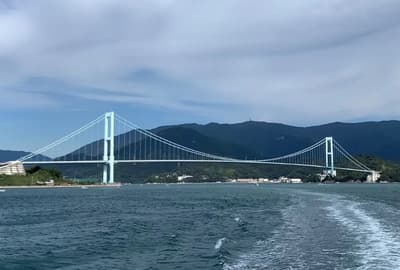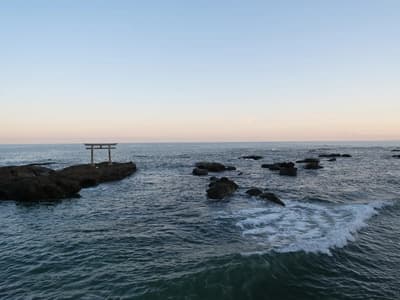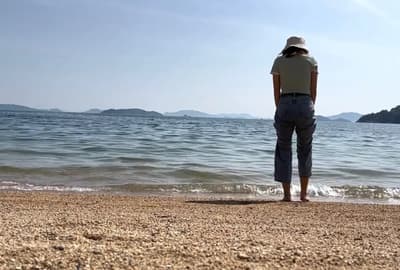Summary
This trip will be to Hiroshima located in the Chugoku region of Japan. This is a one-day plan to visit Takehara, a merchant town called Little Kyoto, and Kure, a port town facing the Seto Inland Sea, by bus and train.We enjoyed good food, a sense of history, a tour of the ship, and the observation deck!Please refer to this page when you come to Hiroshima.
*Please note that information and prices listed are subject to change.
Travel Itinerary
Hiroshima Station(広島駅)
This trip starts at Hiroshima Station.Take the express bus “Kaguyahime-go” to Takehara.
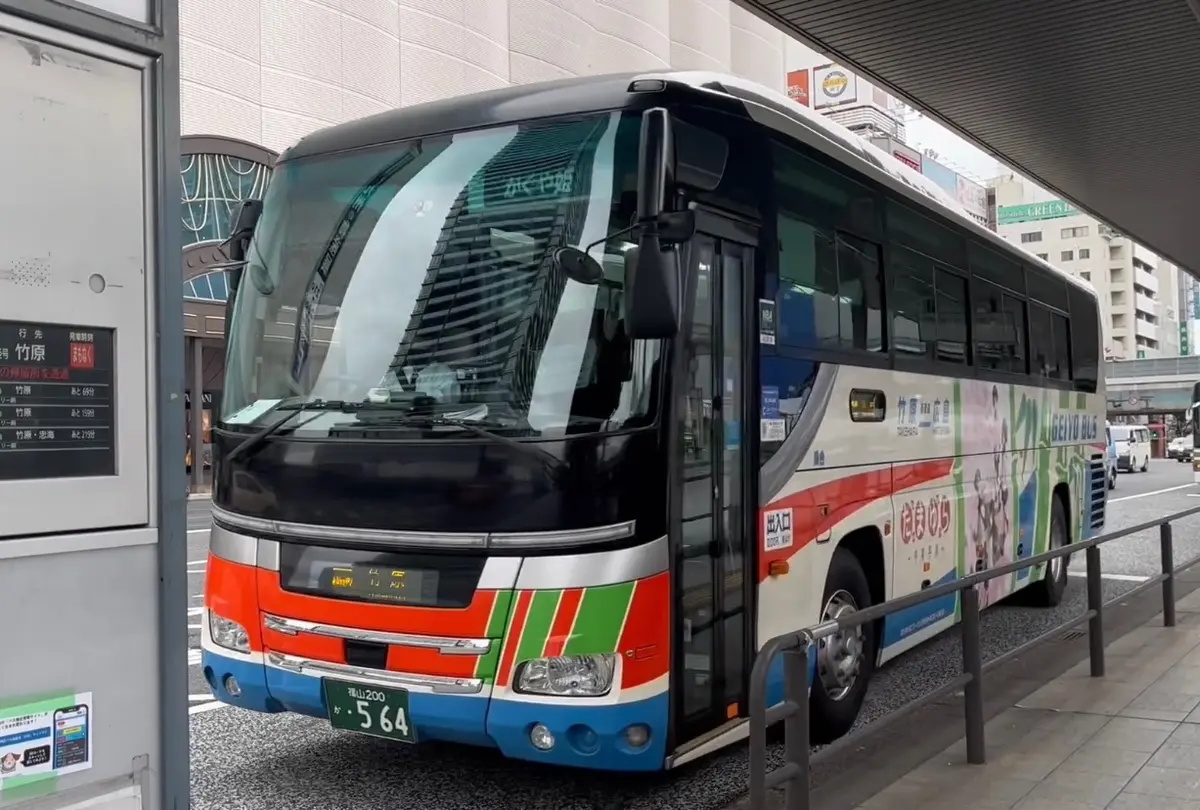
bus stop
Reservations are not available for the Kaguyahime-go, so get in line at the bus stop to board.
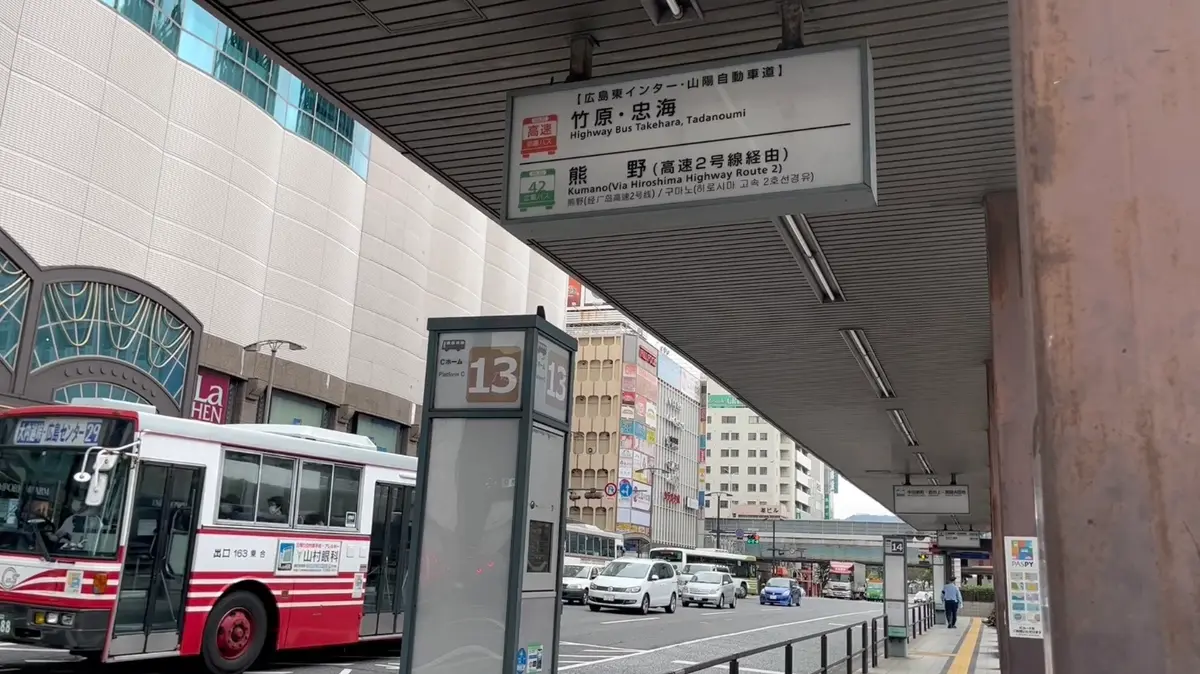
Day trip are also acceptable.
More than 10 highway buses run from Hiroshima Station to Takehara Station each day, making it easy to make a bullet train trip.
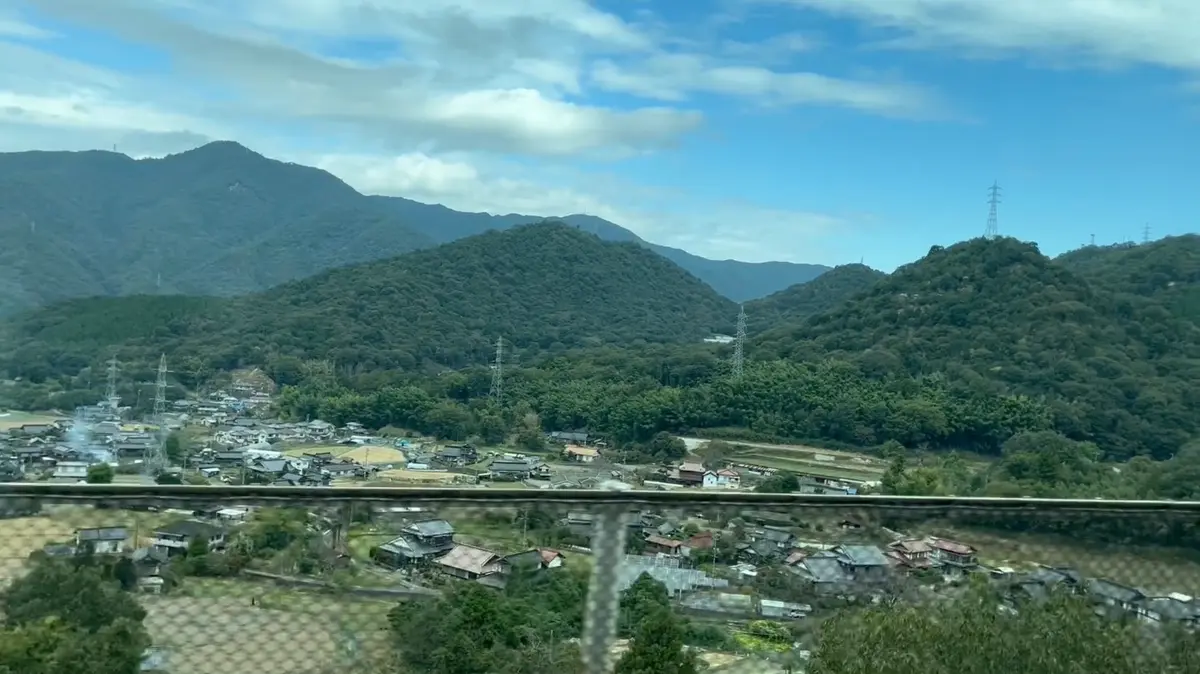
Hiroshima Station, located in Matsubara-cho, Minami-ku, Hiroshima City, Hiroshima Prefecture, is a station of West Japan Railway Company (JR West) and a terminal station where all trains of the Sanyo Shinkansen stop. Many people use the station as the gateway to Hiroshima for sightseeing and business.
Roadside Station Takehara, Restaurant Ayumu(道の駅たけはら 食事処あゆむ)
Upon arrival in Takehara, the first thing I headed for was the restaurant in the roadside station. Here, you will be served a local dish called Gyohan. Gyohan is a dish consisting of grilled and loosened white fish and other ingredients for color on a bed of rice, topped with dashi broth. The aroma of fish instantly spreads in your mouth! It is fun to eat while arranging it yourself.
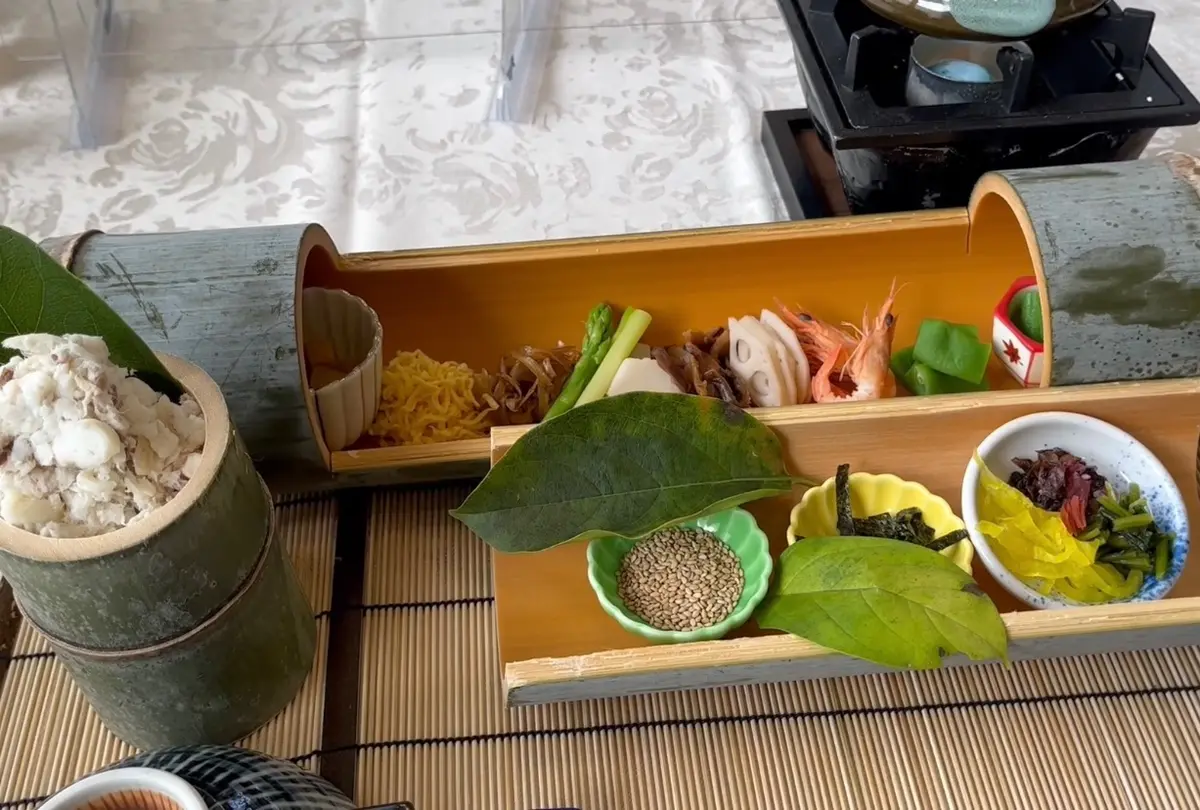
Exterior
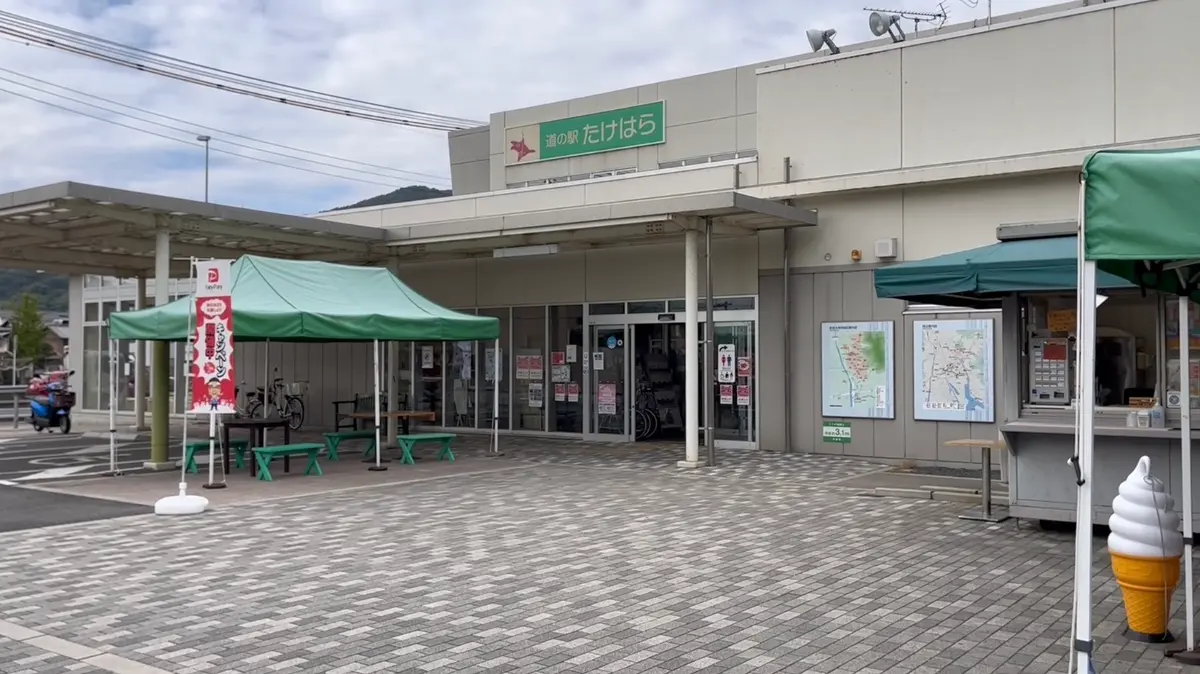
Entrance
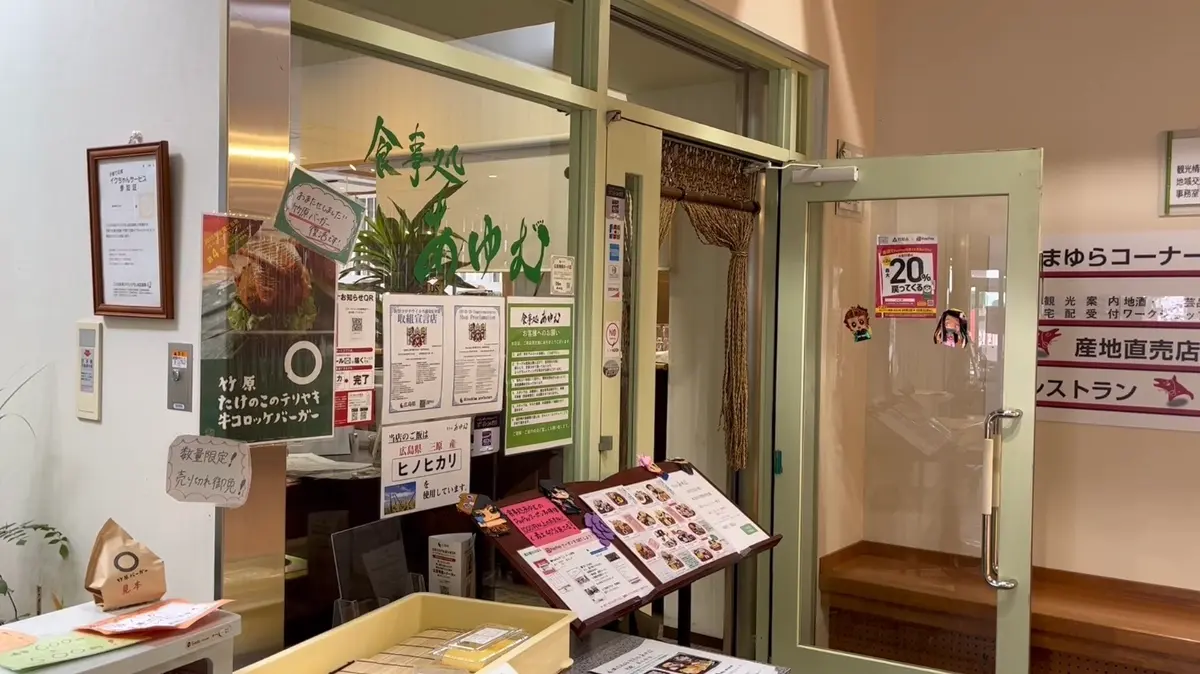
Menu
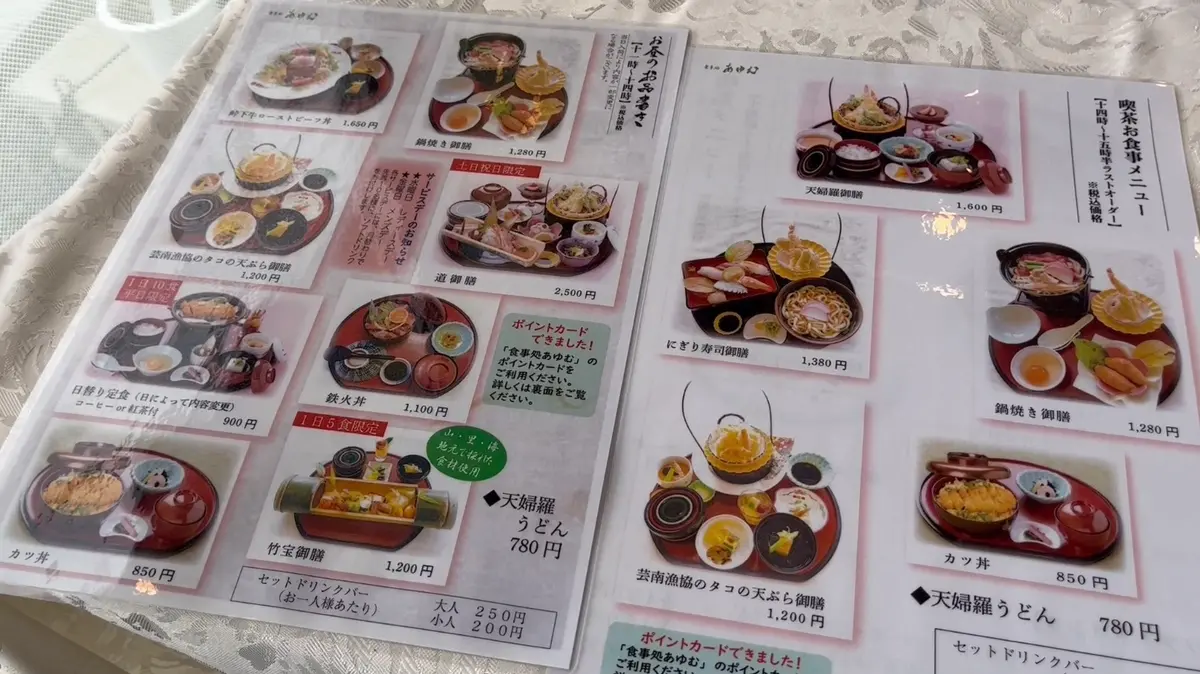
Roadside Station Takehara, Restaurant Ayumu is located in Takehara City, Hiroshima Prefecture. You can enjoy a variety of menu items such as Taoshita-gyu beef udon noodles, beef bowls, curry, and bowls of rice topped with pickled local sea bream from Takehara. (From Saturday, October 21, 2023)
Takehara Townscape Conservation Area(たけはら町並み保存地区)
After filling our stomachs, we strolled around Takehara.We will take a walk in a district where the old streets are beautifully preserved.You can walk as much as you want in the beautiful scenery.
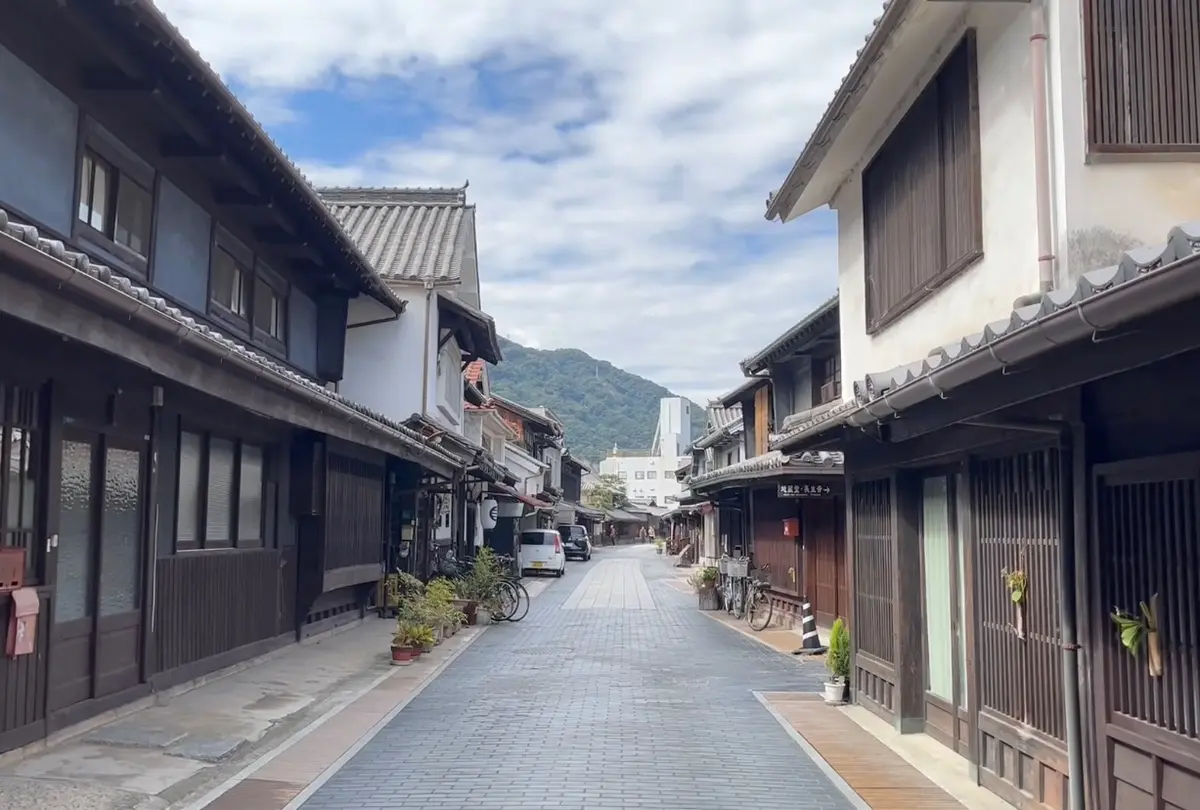
Sightseeing Course
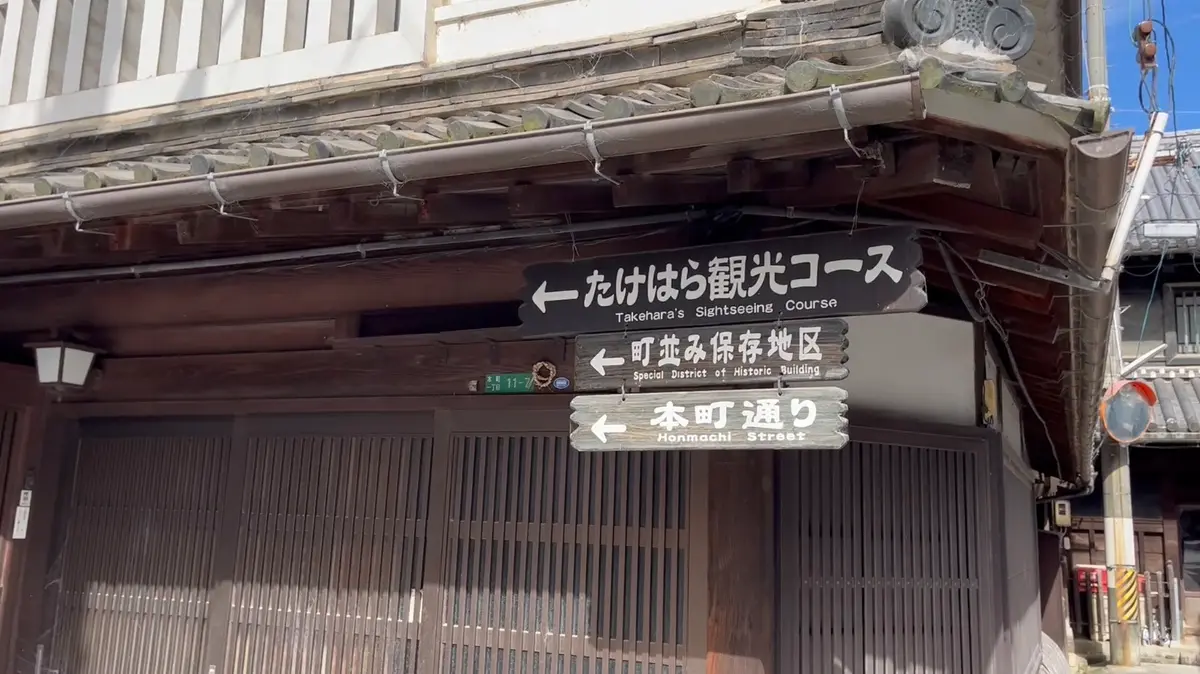
Streetscape
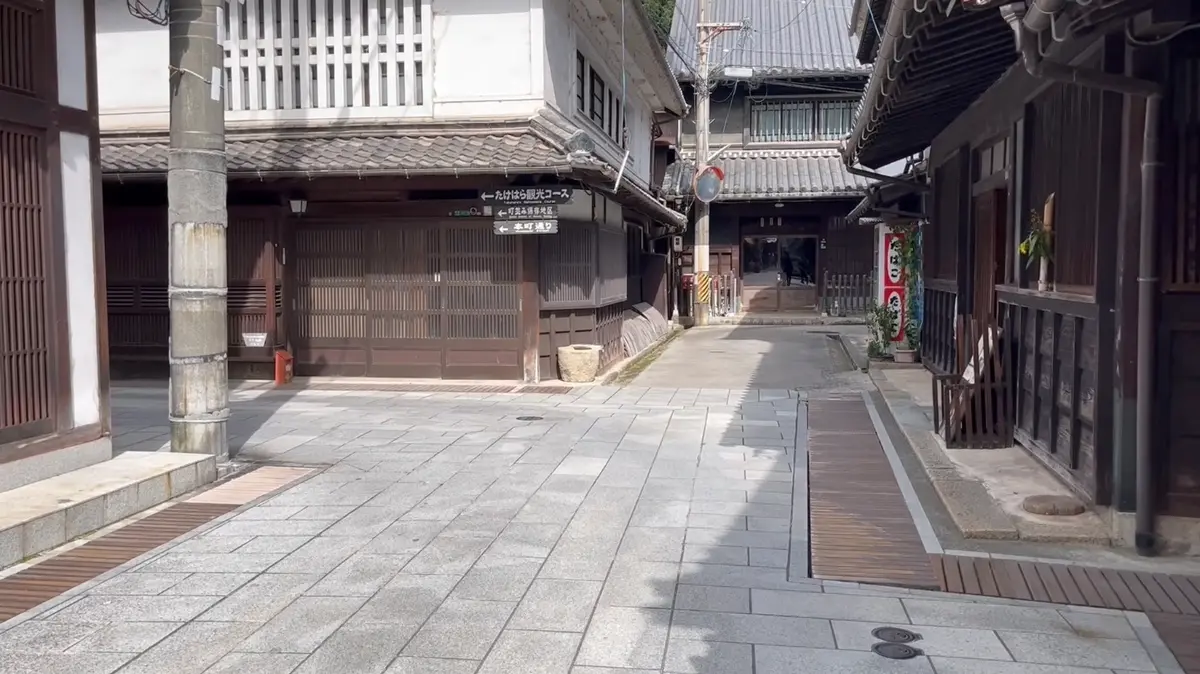
Streetscape 2
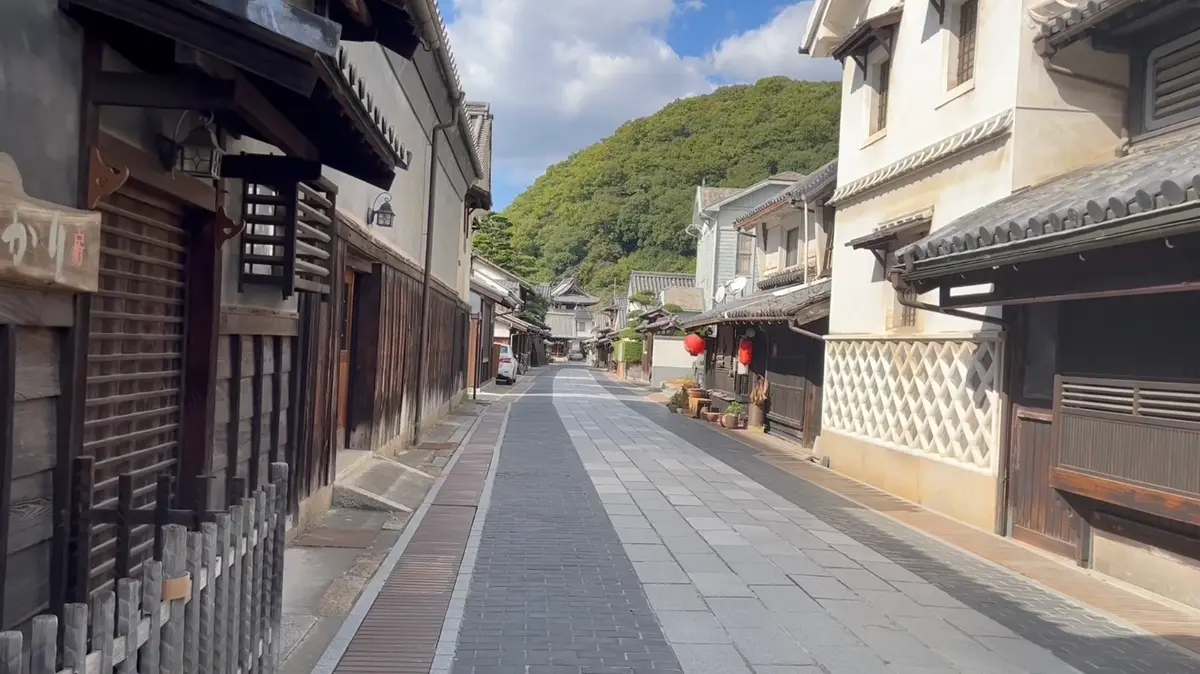
There was also a cute little post box.
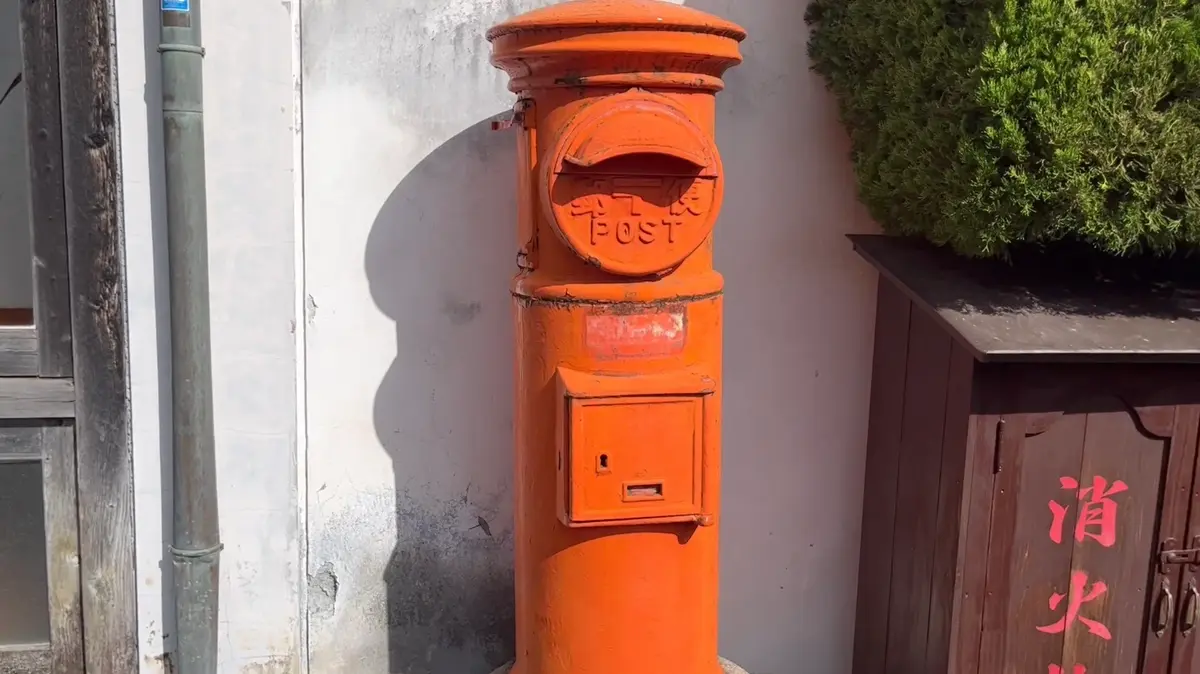
Takehara Townscape Conservation Area, located in Takehara City, Hiroshima Prefecture, is a townscape preservation district with an air of history. There are a number of attractive spots, including the residences of merchants who amassed great wealth in the salt manufacturing and sake brewing industries in the late Edo period, historic temples, and lodging facilities and cafes that use old buildings, including sake cellars. The area is called “Little Kyoto of Aki (Aki being the name of the province that later became Hiroshima Prefecture)” for its elegant streetscape, and has been selected as a national Important Preservation District for Groups of Traditional Buildings.
Taketsuru Shuzo Sake Brewery(竹鶴酒造)
The Taketsuru Shuzo was featured in the NHK morning drama “Massan”. It was not open on the day I visited, so I could not see inside.
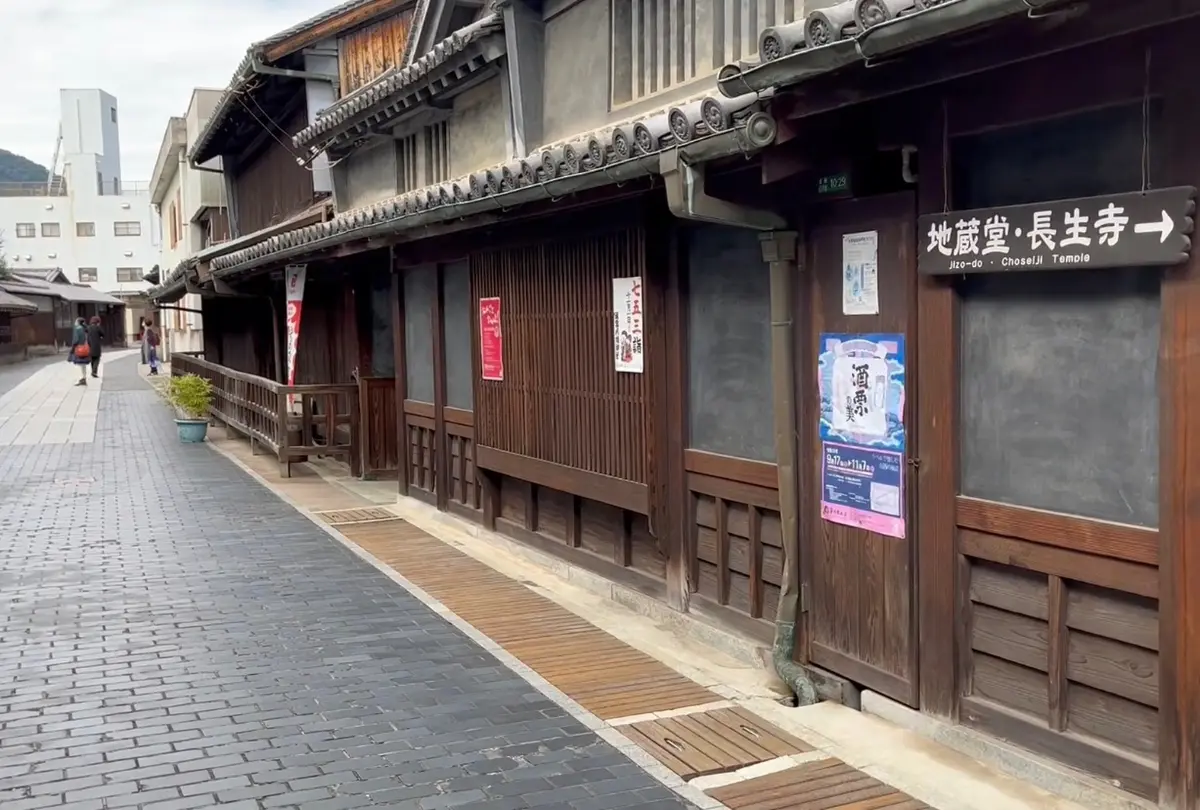
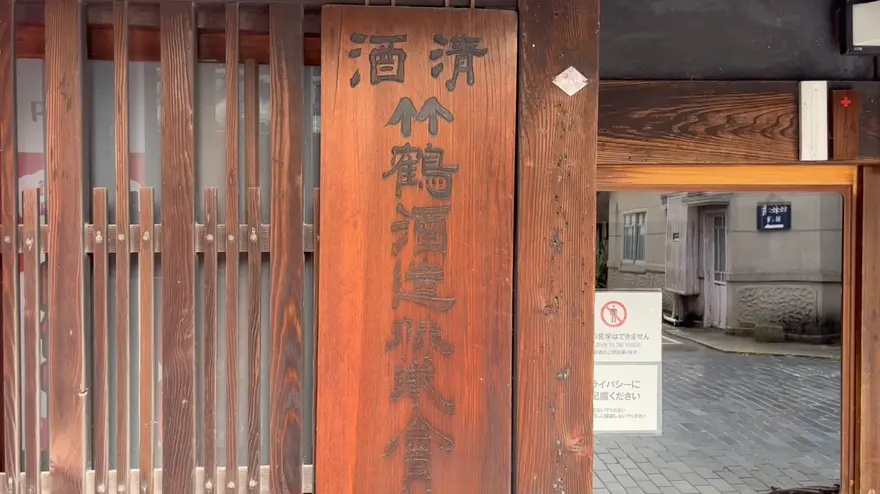

The Taketsuru Shuzo Sake Brewery in Takehara City, Hiroshima Prefecture, is a long-established brewery and the birthplace of Masataka Taketsuru, the founder of Nikka Whiskey and the “father of Japanese whiskey,” and was featured in the NHK morning drama “Massan”.
Former Matsusaka Family Residence(旧松阪家住宅)
You may remember seeing this building on TV.
This is a typical merchant building in the townscape preservation district.
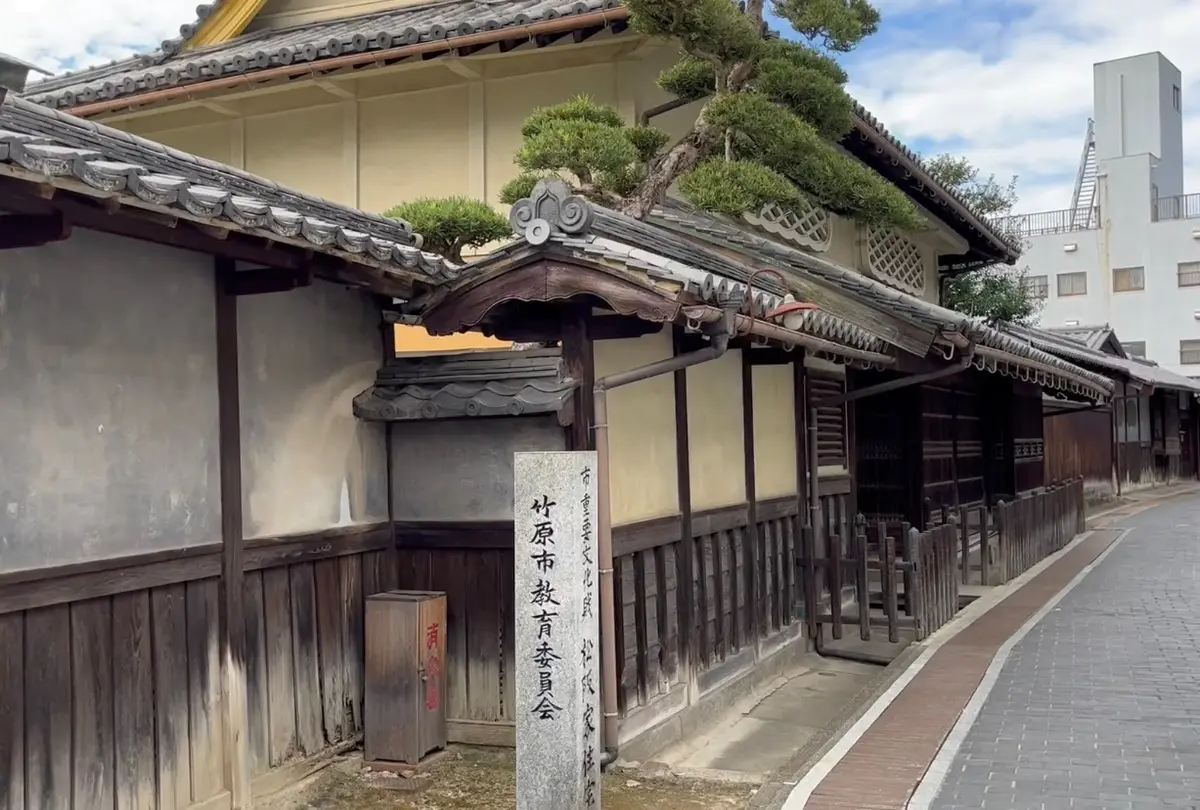
heart mark
I am happy to find a heart mark that says I can get happiness!
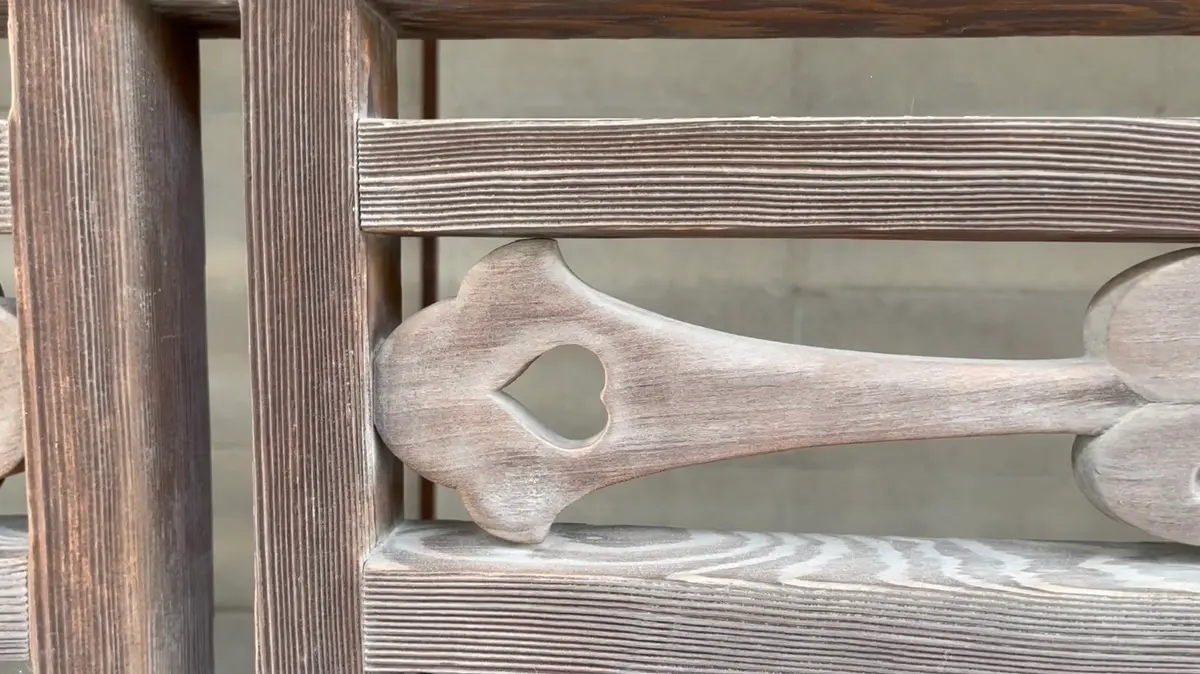
The Former Matsusaka Family Residence in Takehara City, Hiroshima Prefecture, is a representative merchant house. It was the residence of a salt farm owner from the Edo period to the Showa period, and is a representative merchant house in the townscape preservation district. The karahafu (A type of roof shape seen in Japanese architecture) roof and the delicately carved degoushi (Acts like a bay window) are impressive.
Saihoji Temple and Fumeikaku(西方寺・普明閣)
Next, we went to Seihoji Temple and Fumeikaku.The temple grounds are lined with buildings such as the main hall, bell tower, kuri (temple kitchentorehouse), Houkai Jizo Hall, and the Sanmon Gate (temple gate).
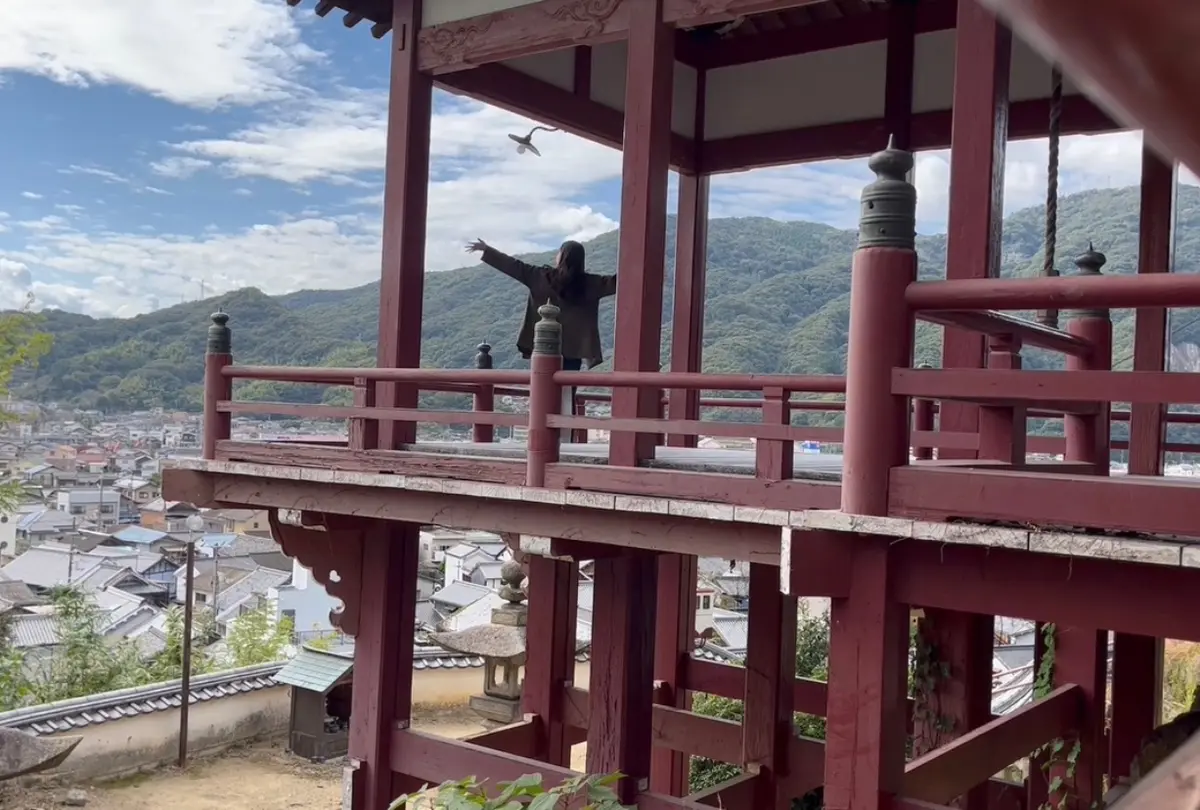
Climb the stairs.
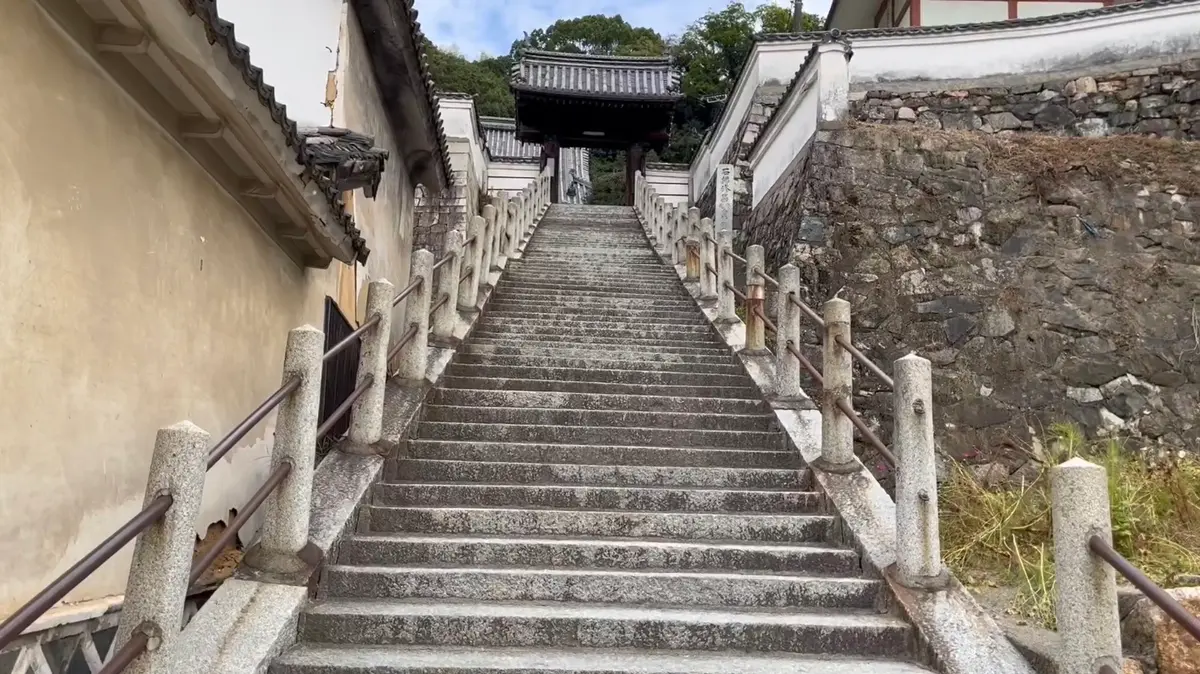
From the top of the stairs…
It overlooks the tiled roofs of the conservation area.
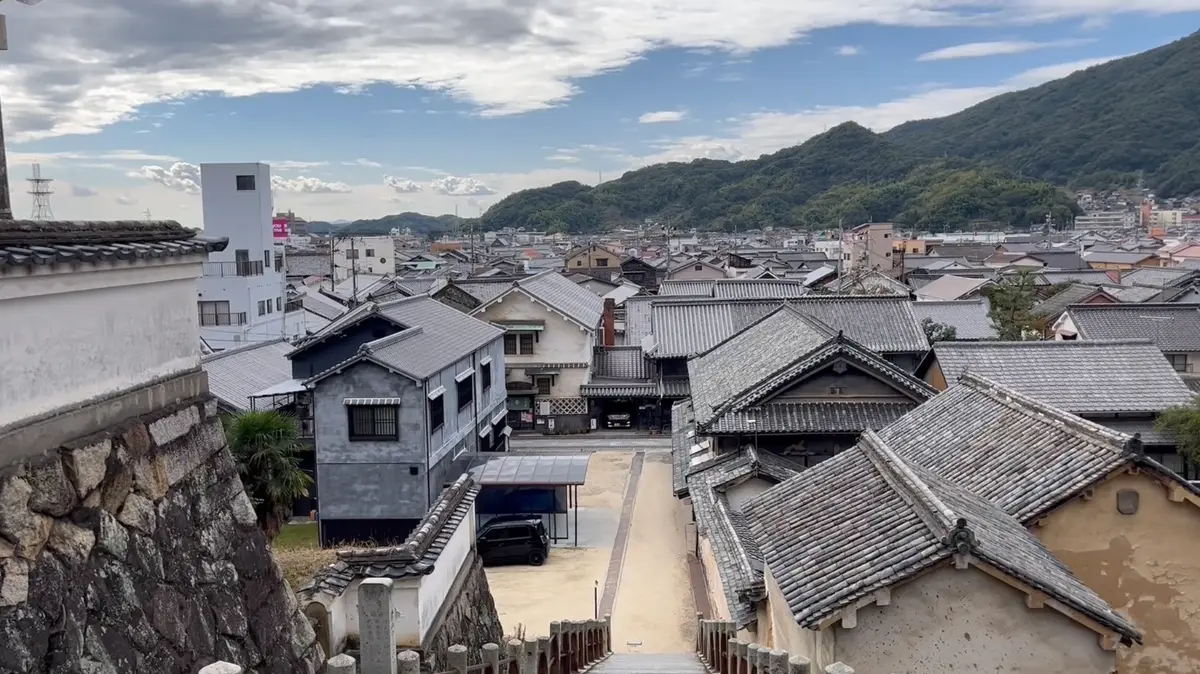
Saihoji Temple (西方寺)
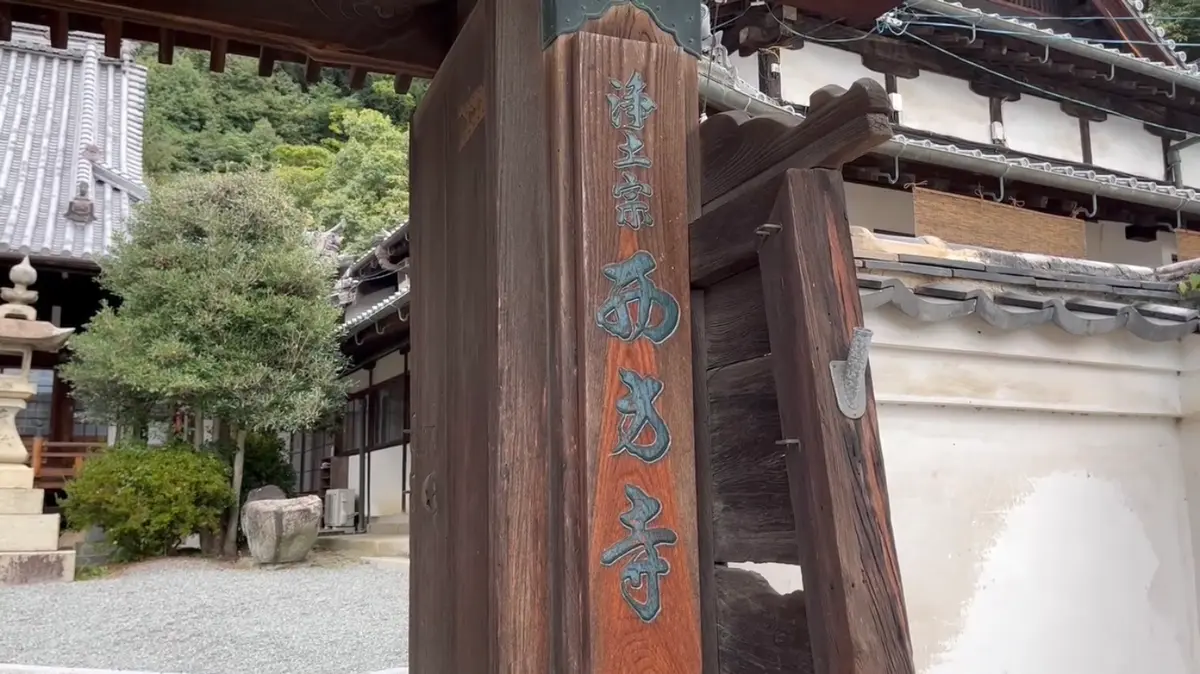
A magnificent hall
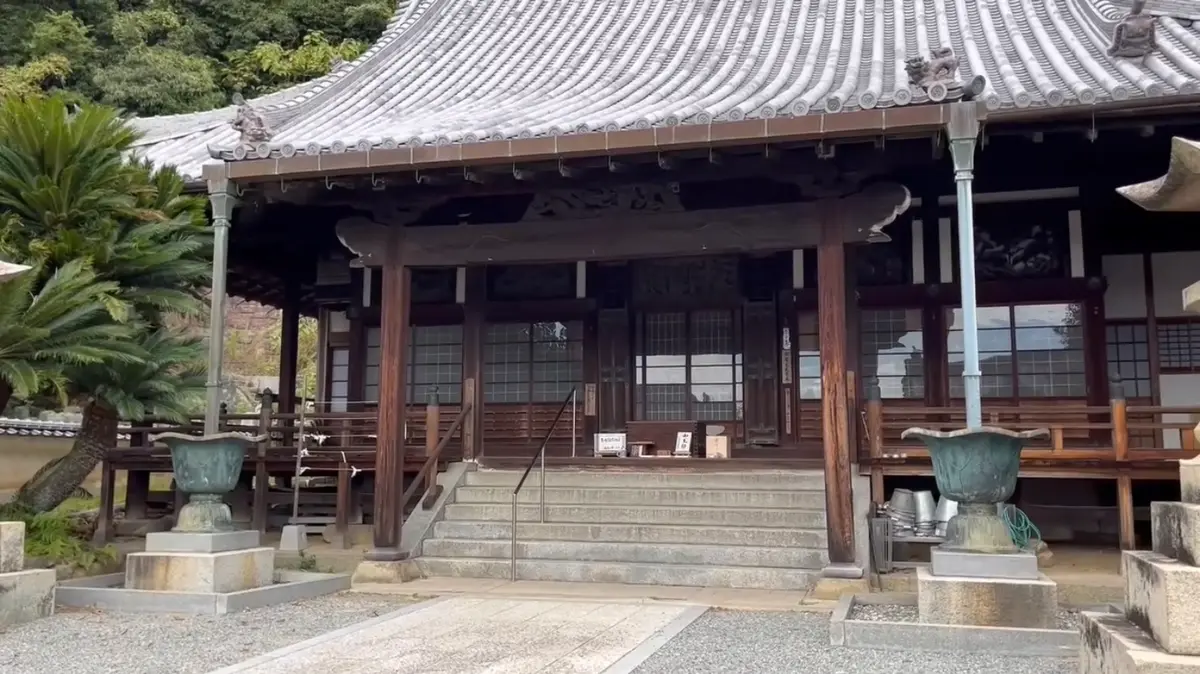
I also drew a fortune!
It was a great fortune✨
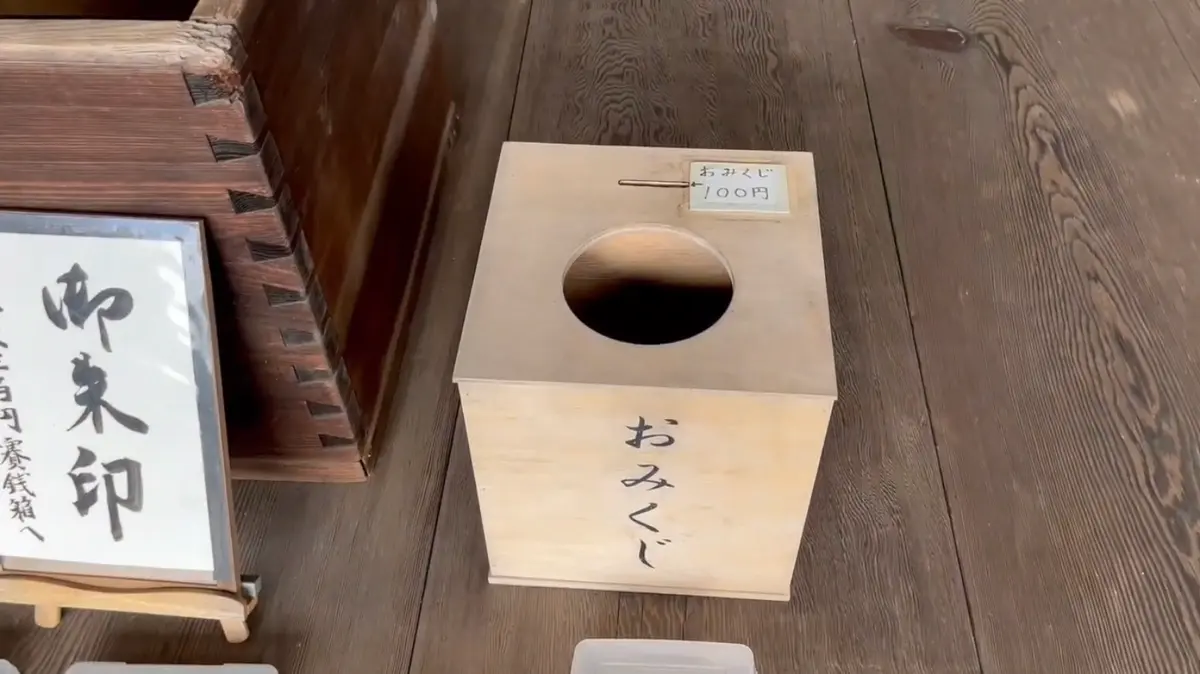
Fumeikaku (普明閣)
In Fumeikaku, you can take off your shoes and climb on the stage.
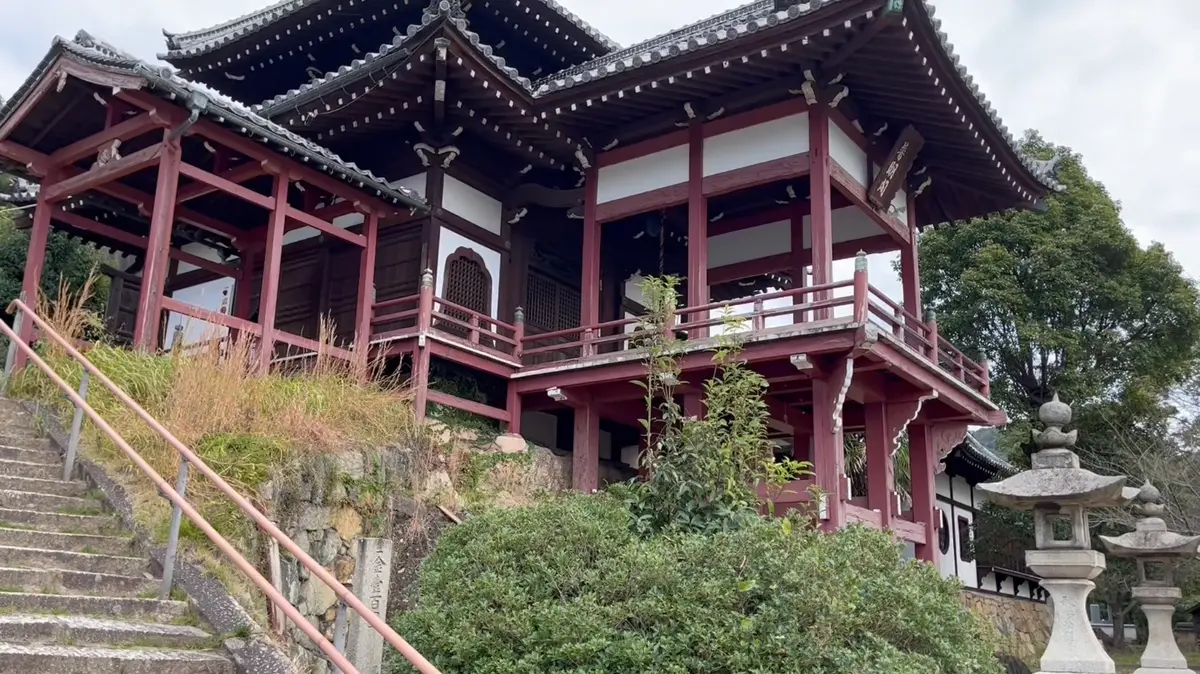
Saihoji Temple and Fumeikaku, located in Takehara City, Hiroshima Prefecture, is a well-known tourist attraction. Saihoji Temple is a temple of the Jodo sect with a main hall rebuilt in 1702, and Fumeikaku, a Kannon Hall, was built in 1765. The temple is well known as a symbol of Takehara, and its location on a hill allows visitors to enjoy a panoramic view of the town.
Shoukei Square(憧憬の広場)
Next, we went to the Shoukei Square.
We visited the statue of Masataka and Rita Taketsuru, the famous couple who founded Nikka Whiskey.
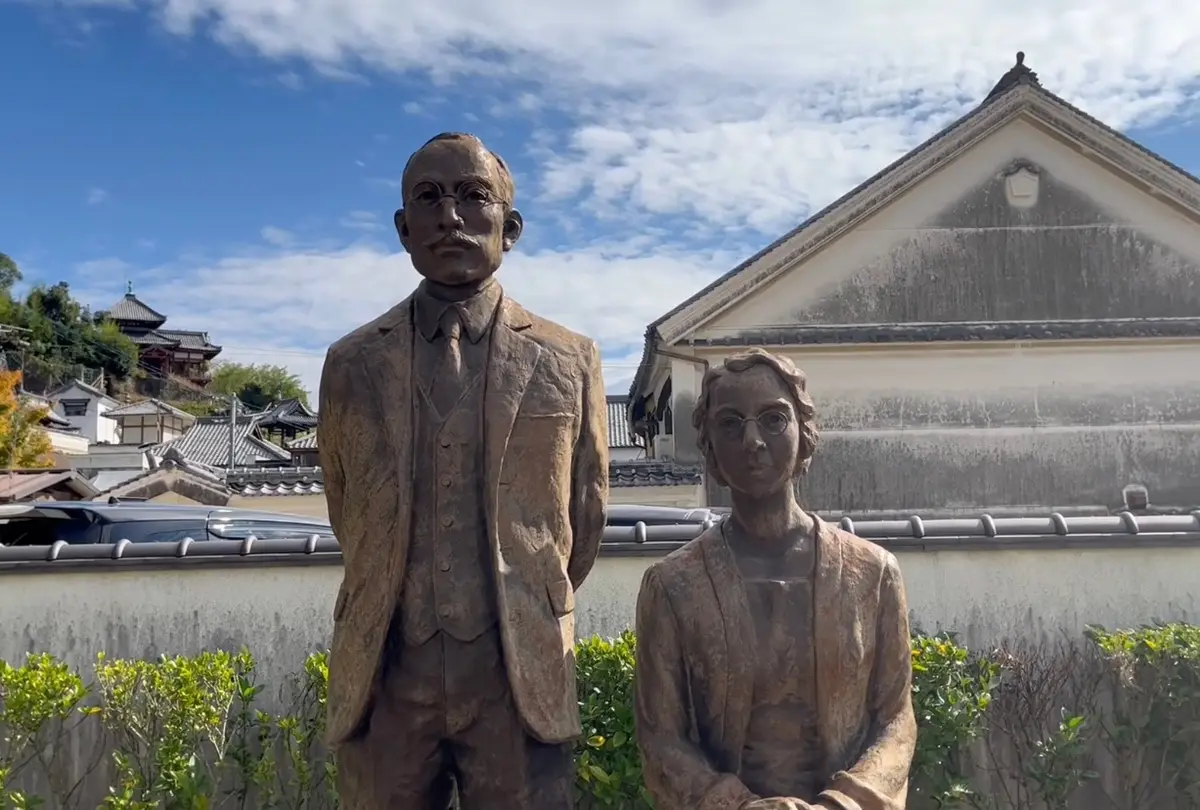
Exterior
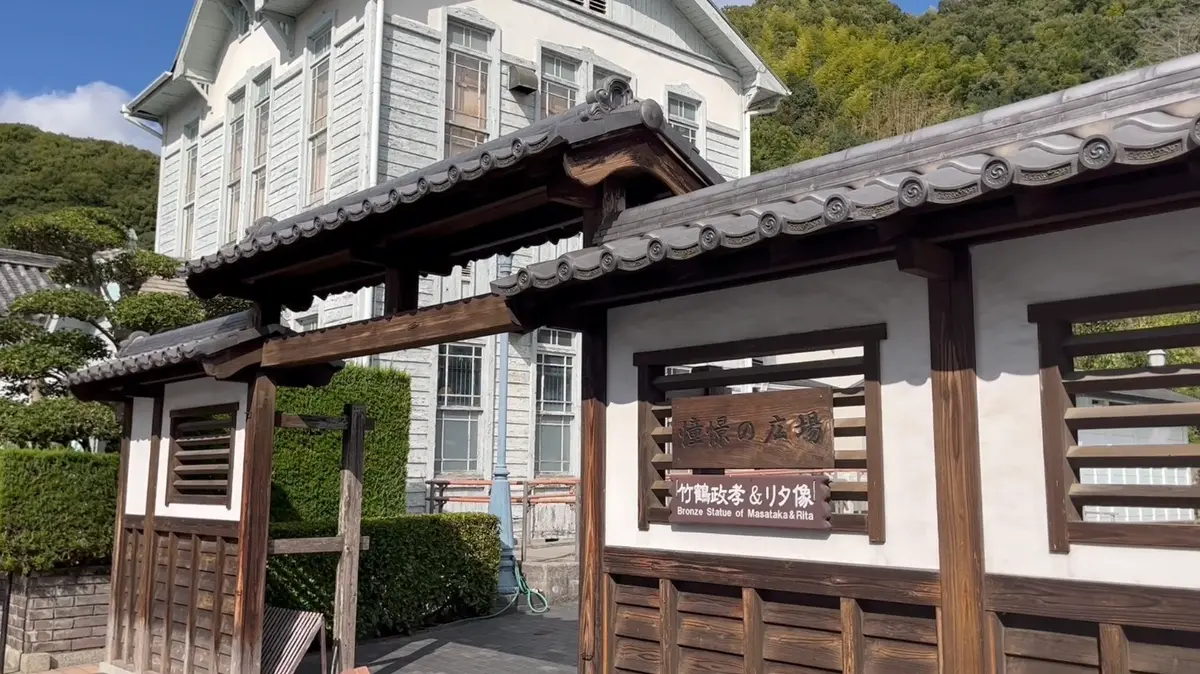
wise saying
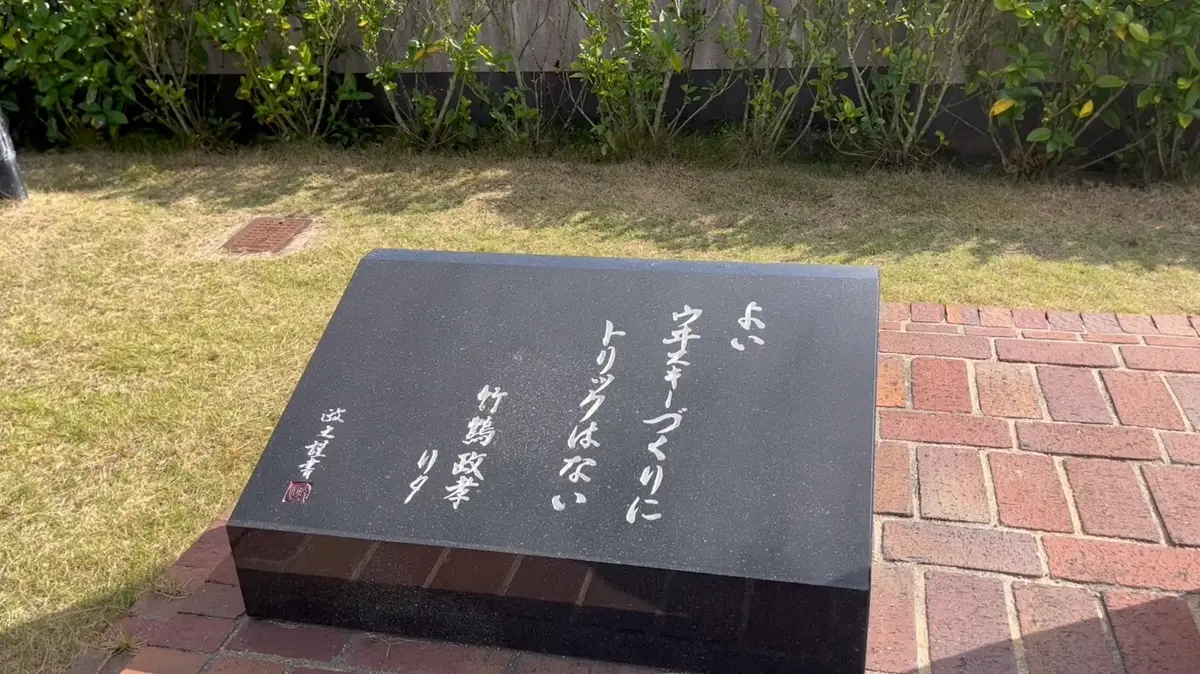
Shoukei Square in Takehara City, Hiroshima Prefecture is a square located along Hondori Street, the main street designated as Takehara Townscape Conservation Area. It is located next to the Takehara City Museum of History and Folklore, where the statues of Masataka & Rita Taketsuru, the founders of Nikka Whiskey and famous as the “father of Japanese whiskey,” stand.
Morikawa Residence(旧森川家住宅)
This is a grand house built in the Taisho era (1912-1926), and in addition to the main house, a detached house, a tea house, and storehouses still remain as they were in those days.
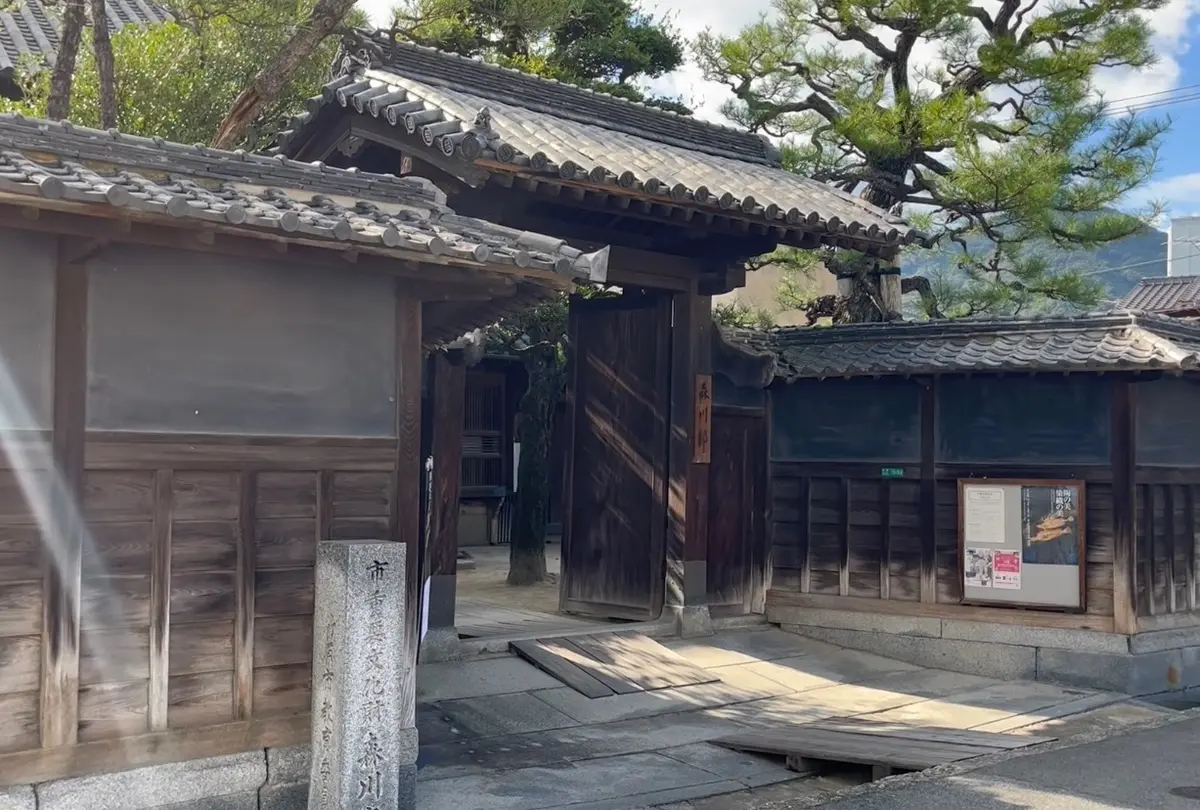
The Morikawa Residence is a residential building located in Takehara City, Hiroshima Prefecture. In addition to the main house, the detached house, a tea house, and storehouses, remains as it was in the Taisho era (1912-1926). Admission is 400 yen, and it is designated as an important cultural property by Takehara City.
Machinami Takekobo Bamboo Craft Workshop(竹原まちなみ竹工房)
The pretty pink bamboo windmill is the landmark of Bamboo Craft Workshop.Takehara, as its name suggests, is famous for its bamboo, and every fall there is an event in which 5,000 bamboo lanterns are lit up in the preservation area.
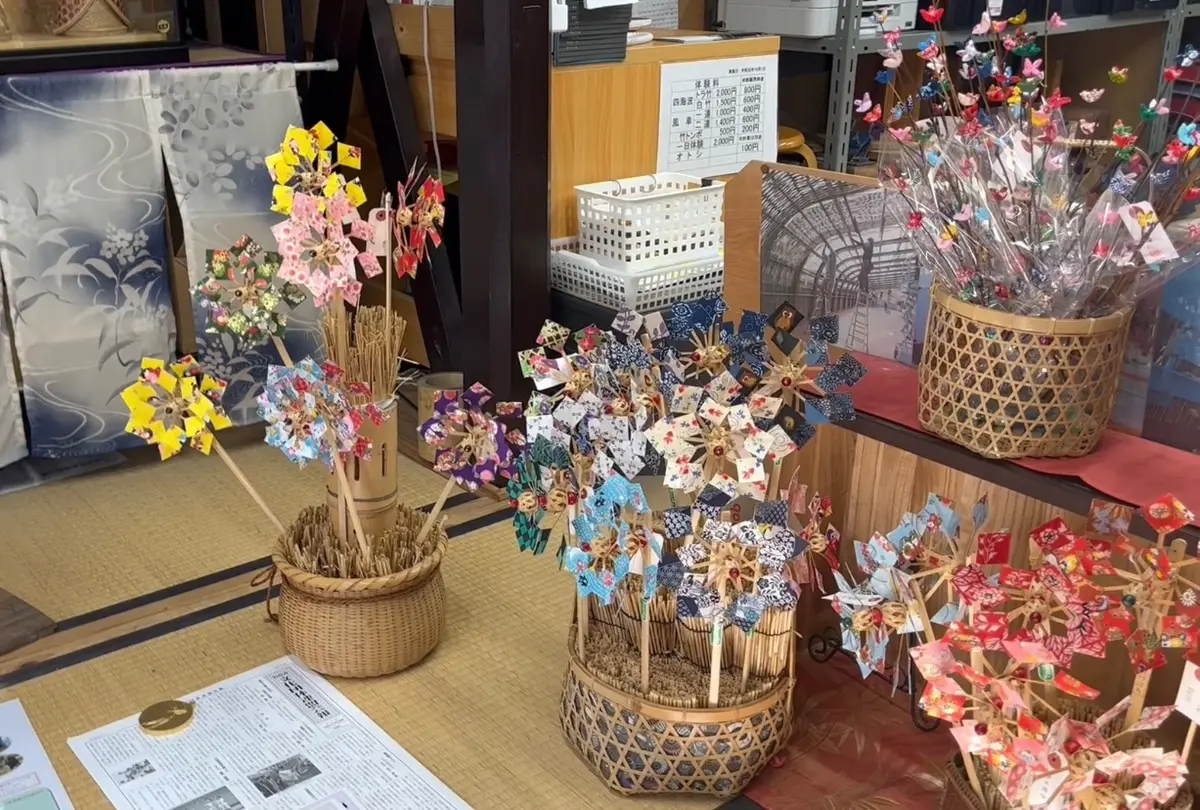
Entrance
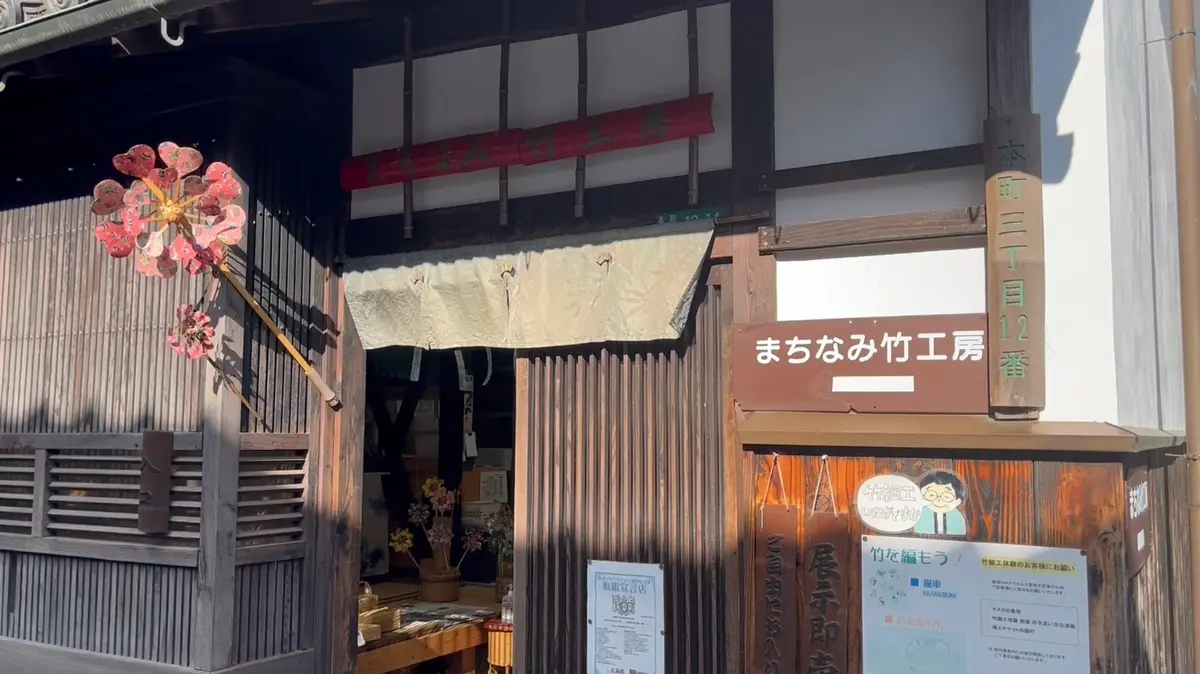
Bamboo Windmill
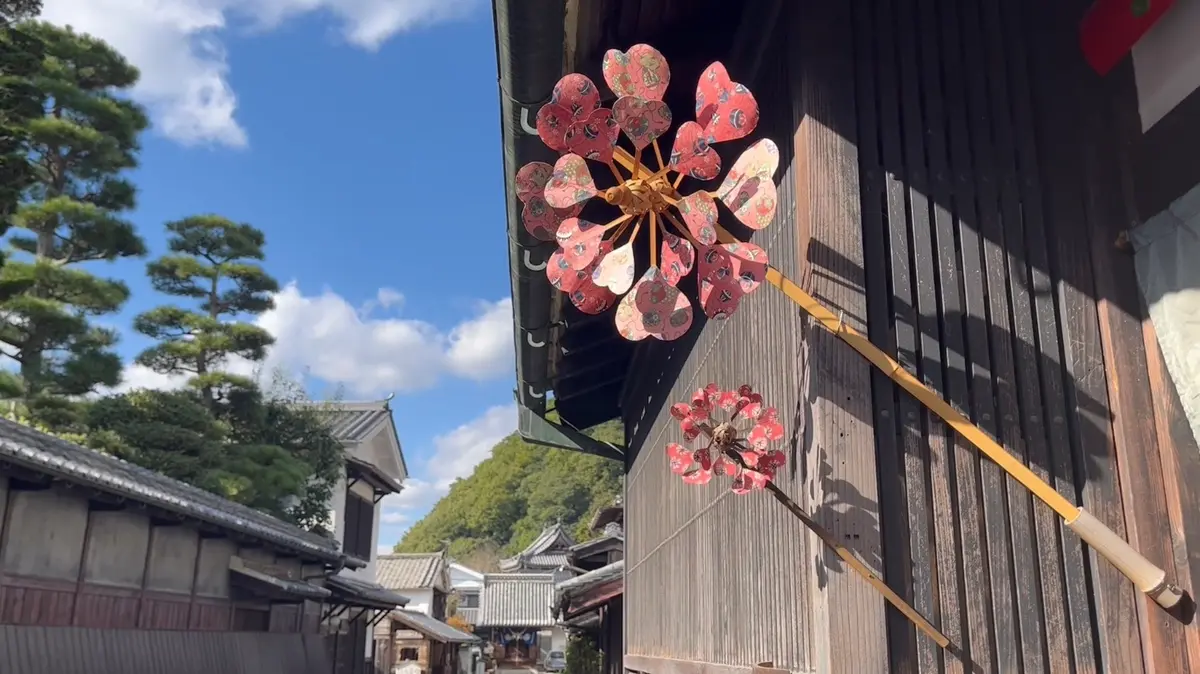
And wind chimes made of bamboo.
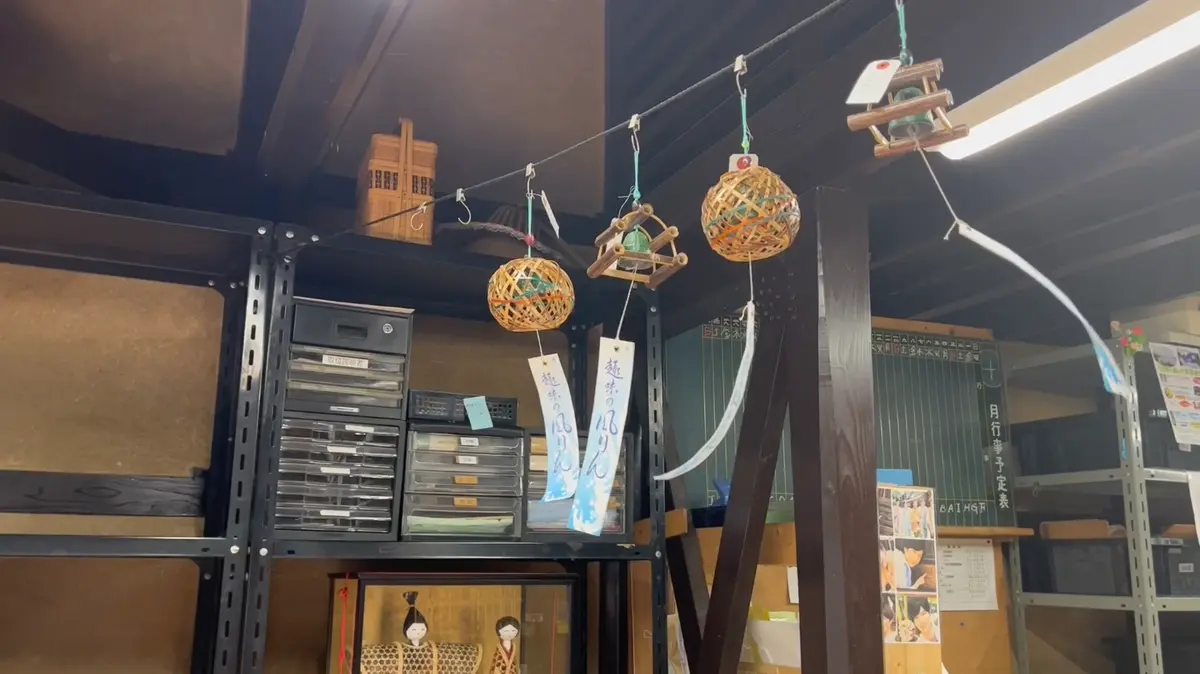
Shelf full of bamboo works
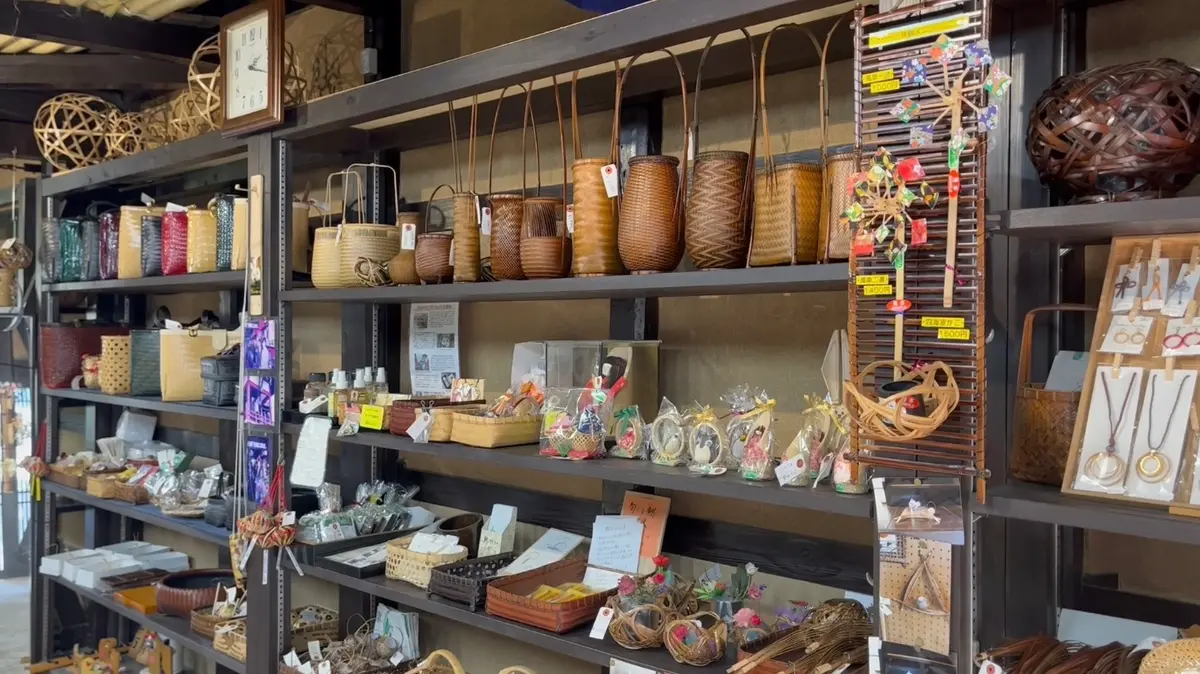
You can also experience
I hope to make time to come back.
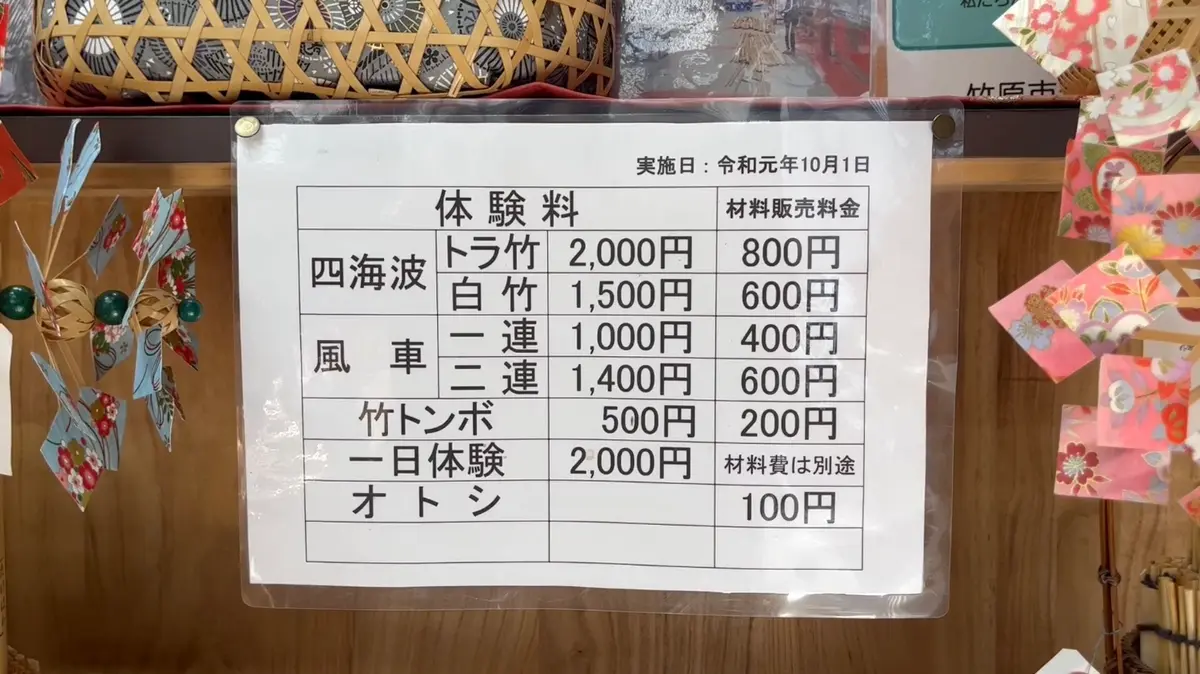
Machinami Takekobo Bamboo Craft Workshop, located in Takehara City, Hiroshima Prefecture, produces, displays, and sells a variety of bamboo crafts. Visitors can try their hand at bamboo crafting without making a reservation. It takes about 40 minutes to one hour to complete the craft with careful advice from the craftsmen.
Takehara Station(竹原駅)
We returned to Takehara Station.I am now heading to Kure on the sightseeing train etSETOra.
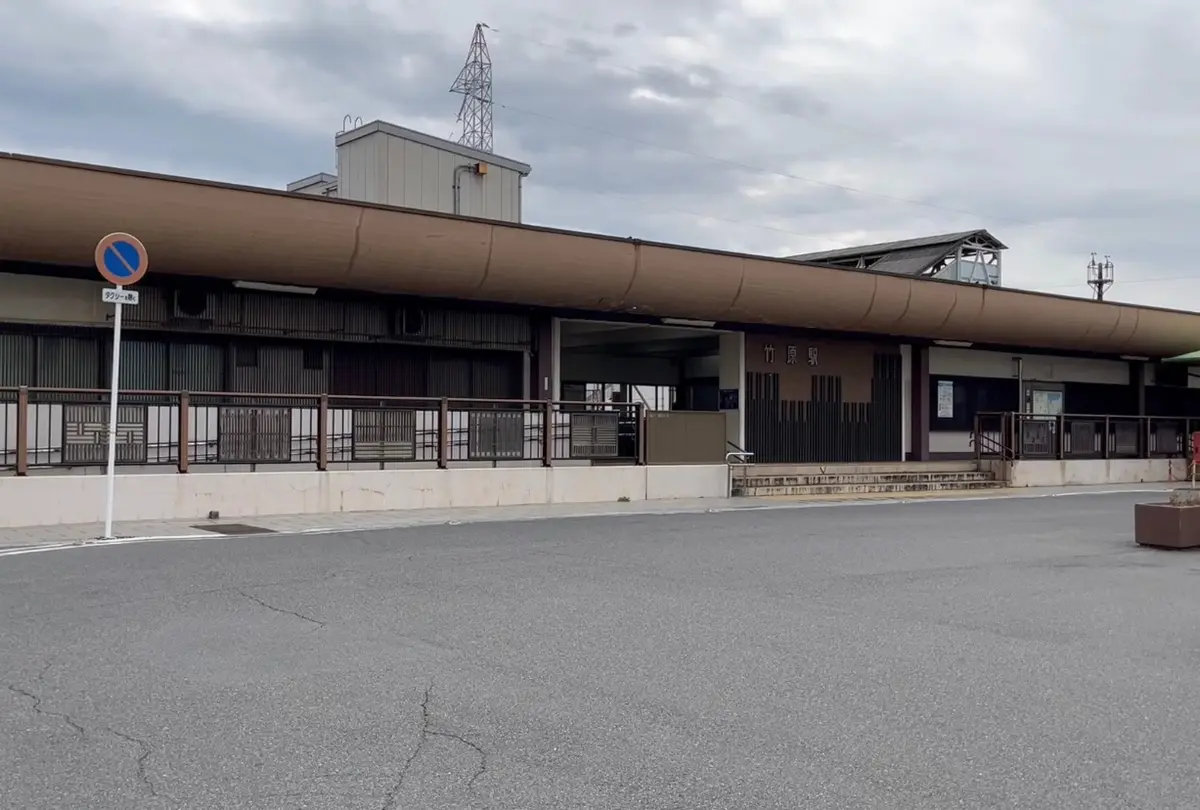
I ride for about an hour.
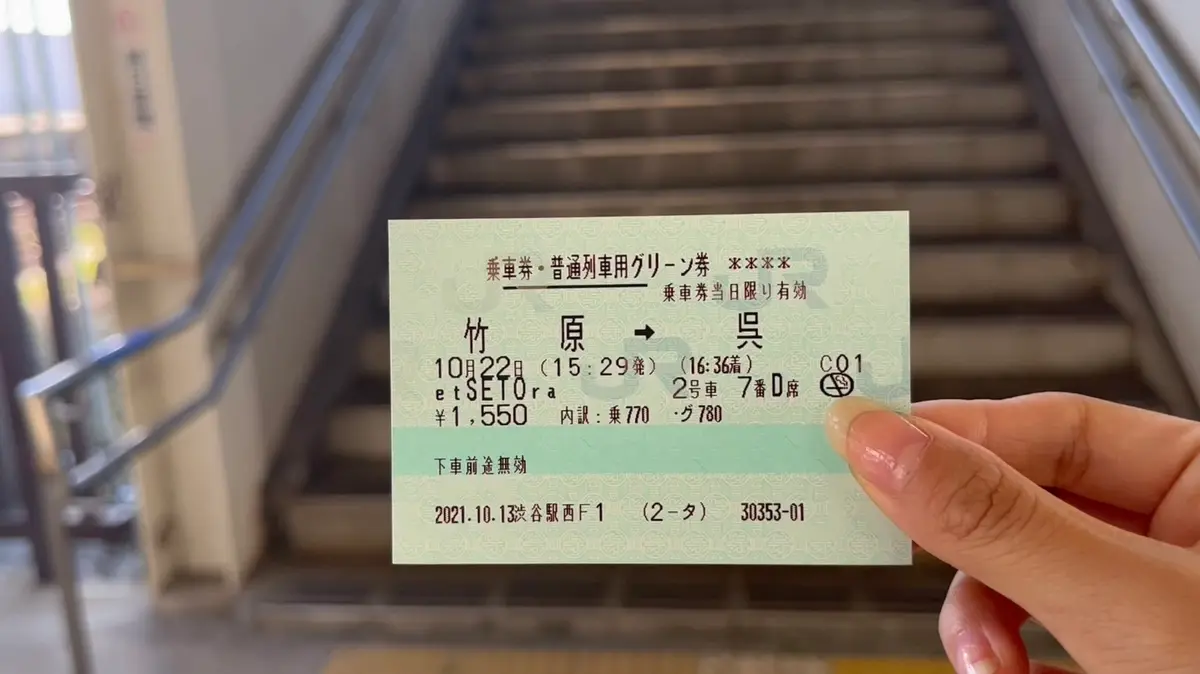
Takehara Station, located in the center of Takehara City, Hiroshima Prefecture, is a station on the West Japan Railway (JR West) Kure Line. Although the station is unmanned early in the morning and at night and some hours during the day, it is conveniently accessible from the Hiroshima and Mihara areas. From the station, it takes about 15 minutes on foot to reach major tourist attractions such as the Machinami Preservation District.
etSETOra
“etSETOra” is a sightseeing train that runs along the seaside from JR Hiroshima Station to Onomichi Station.
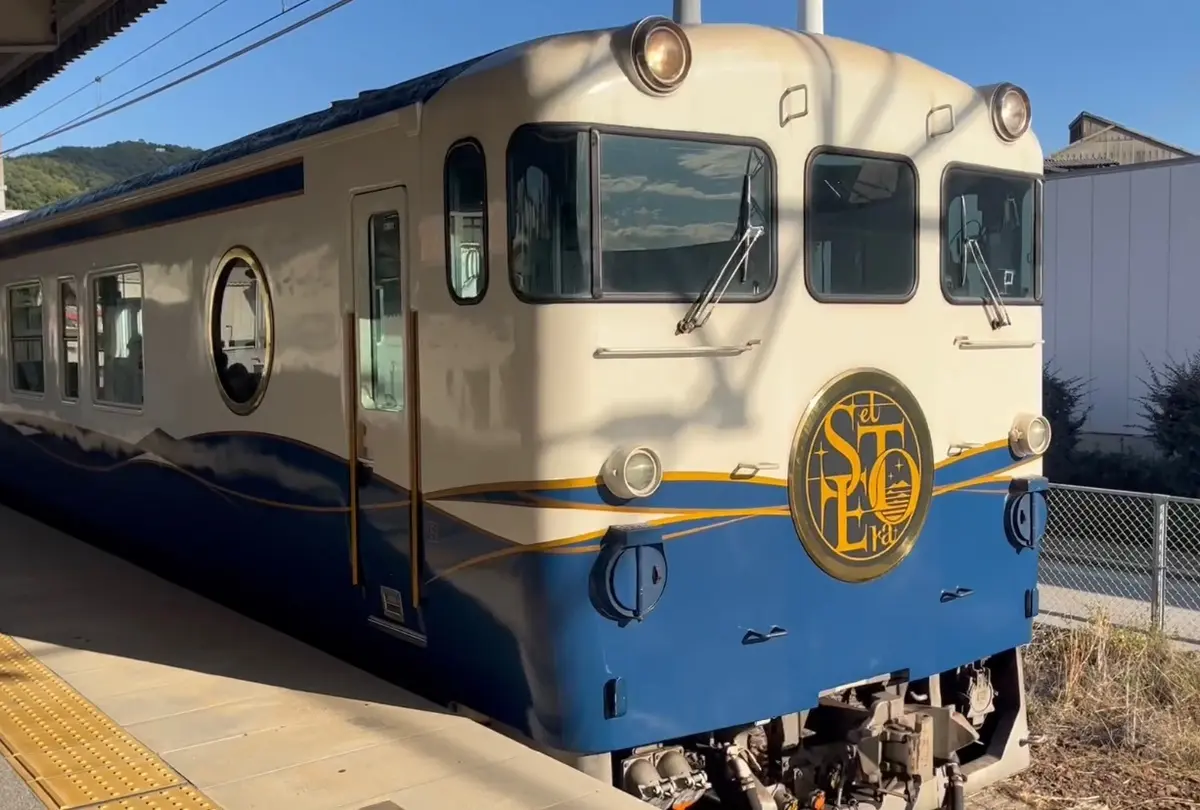
Inside the train
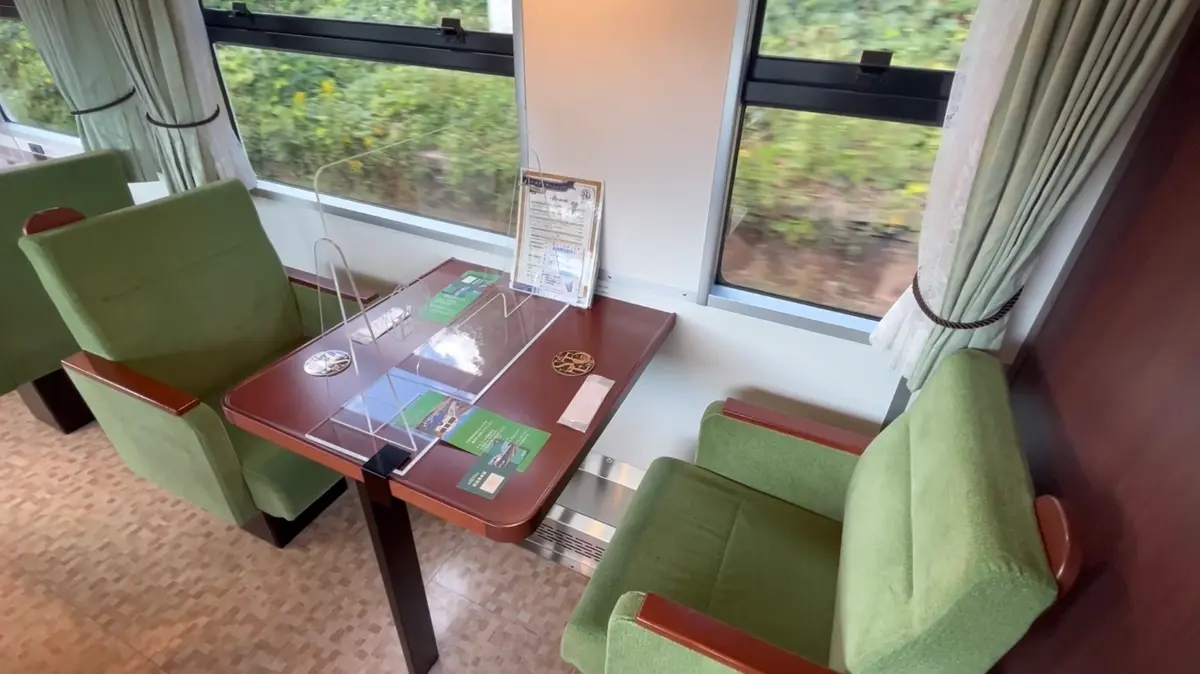
Inside the car
The windows are large, open, and offer a great view ✨
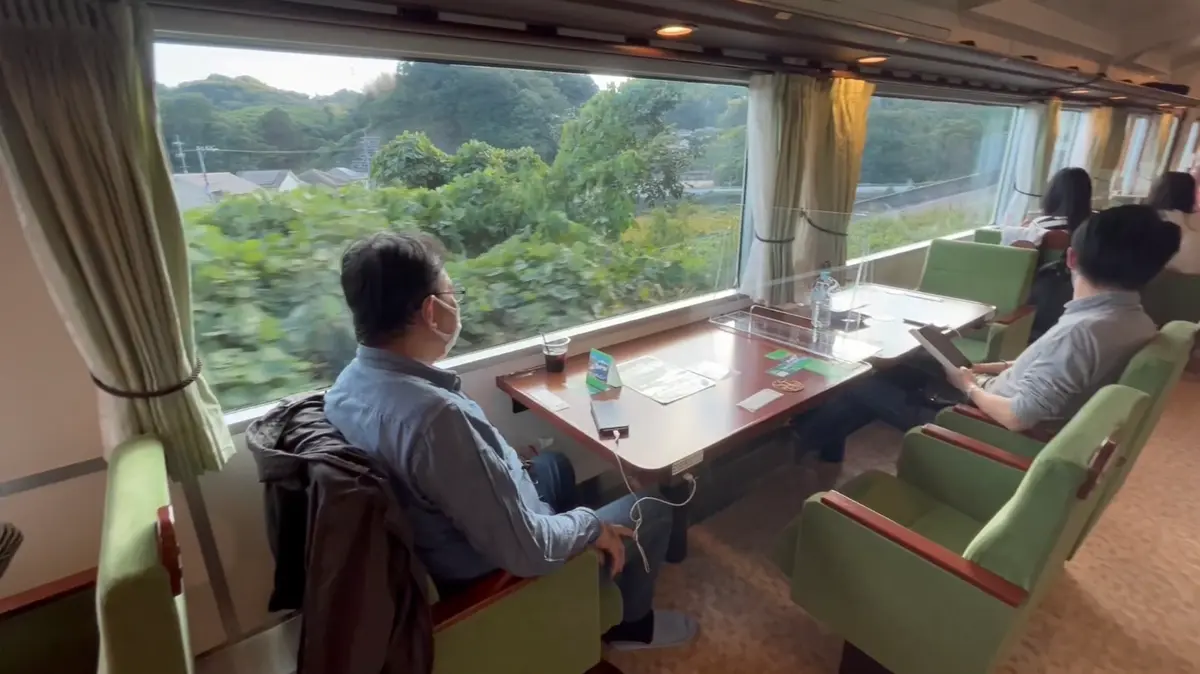
And charging.
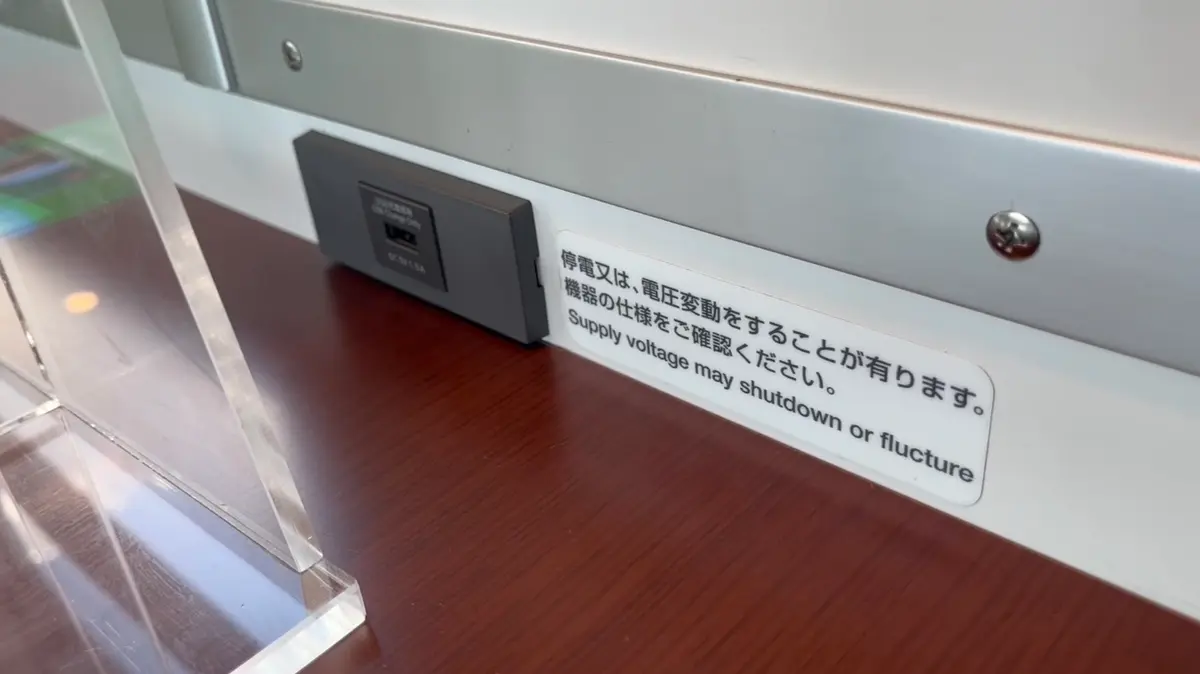
commemorative train pass
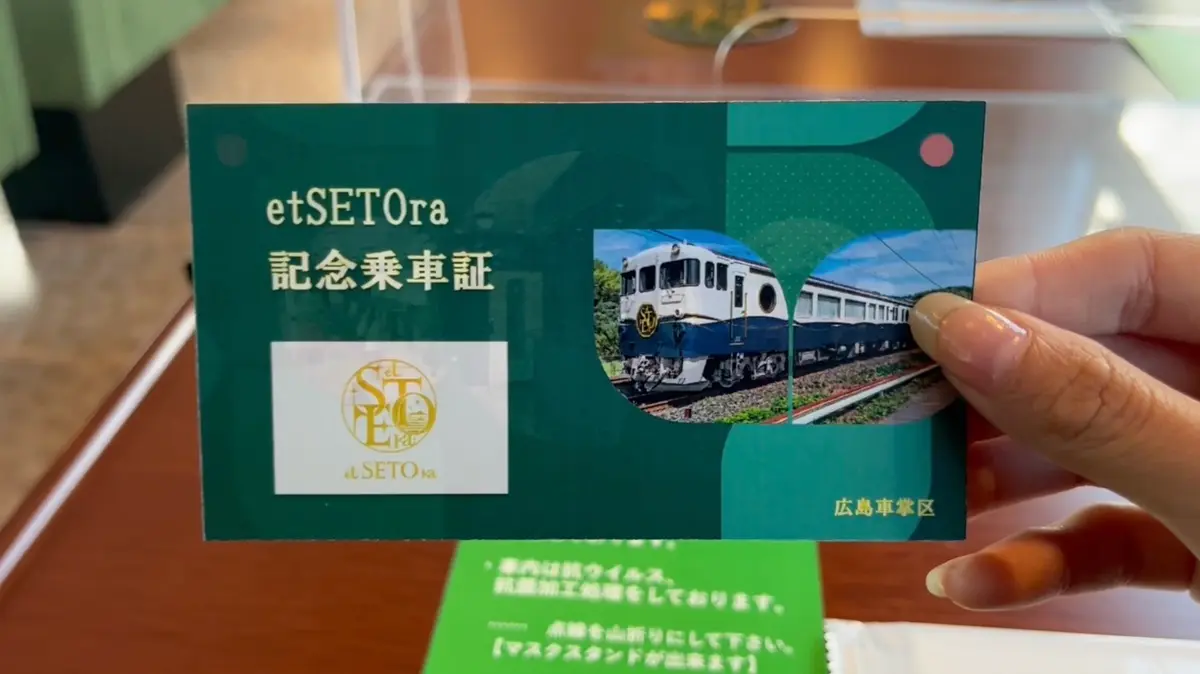
Coaster with logo
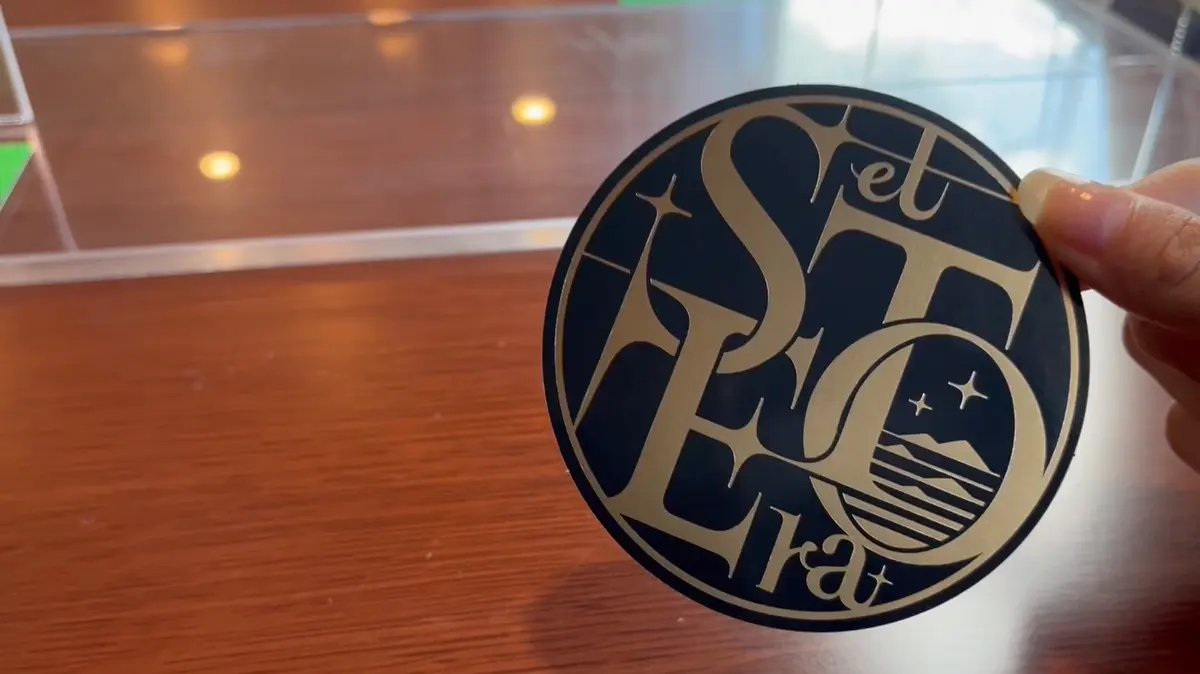
Bar counter menu
Local sake and local sweets from Hiroshima were sold!
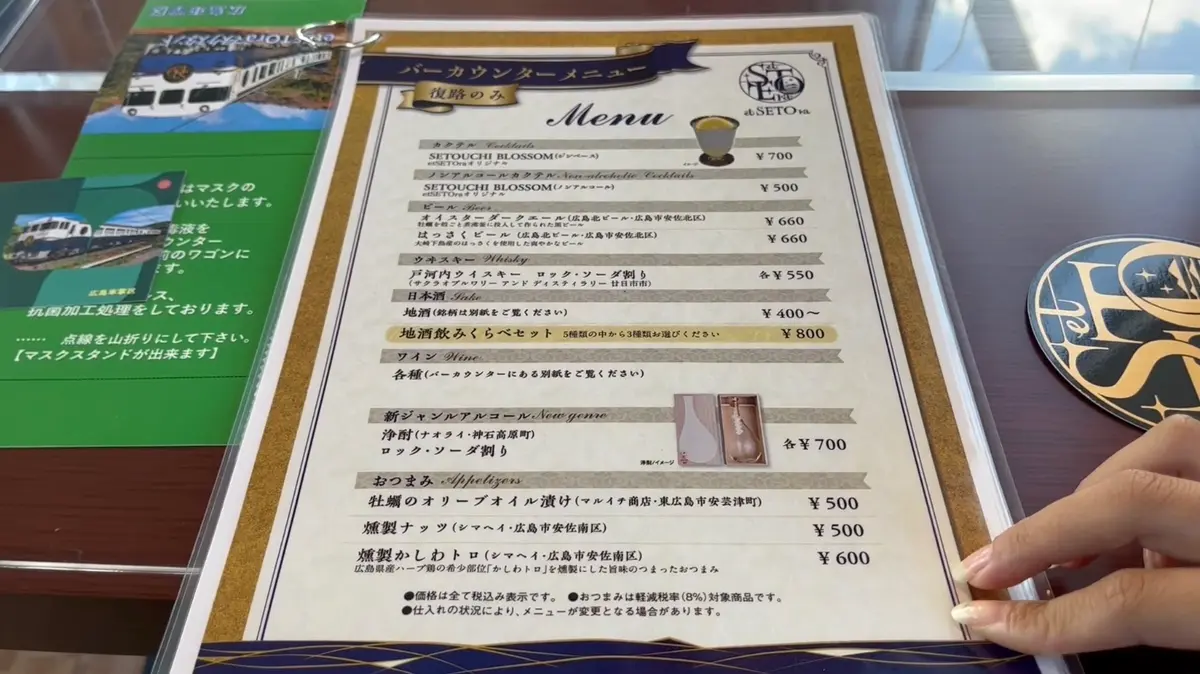
Kure Line Guide with Station Stamps
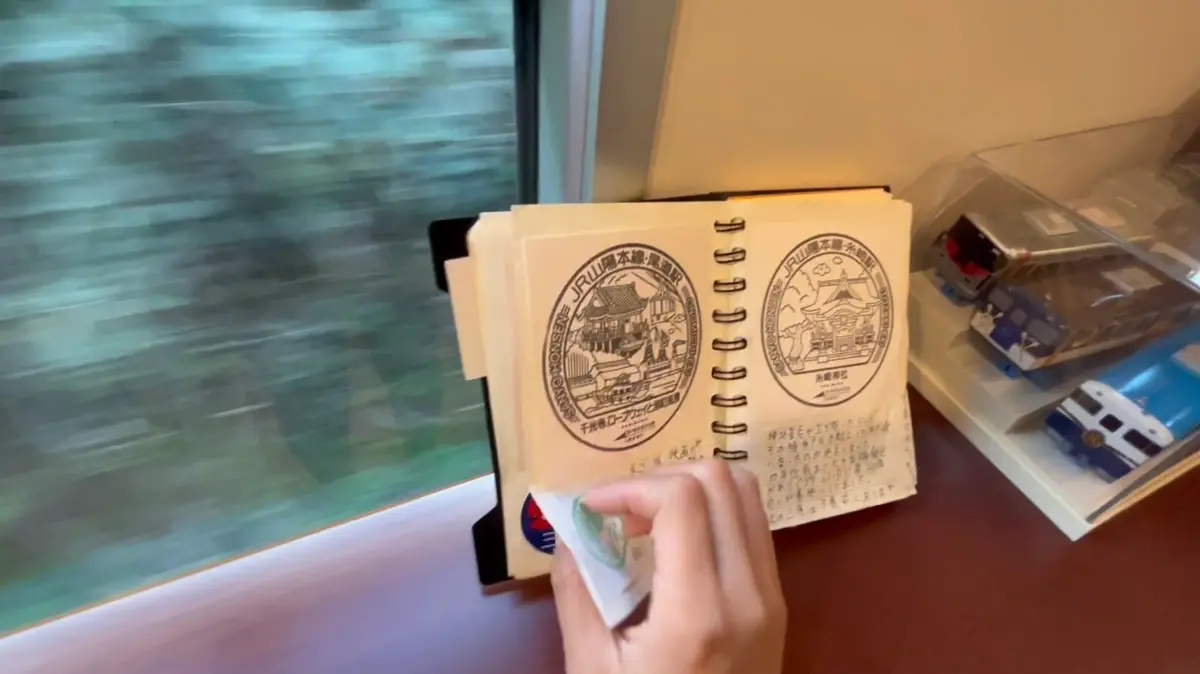
Car No. 1

And logo goods.
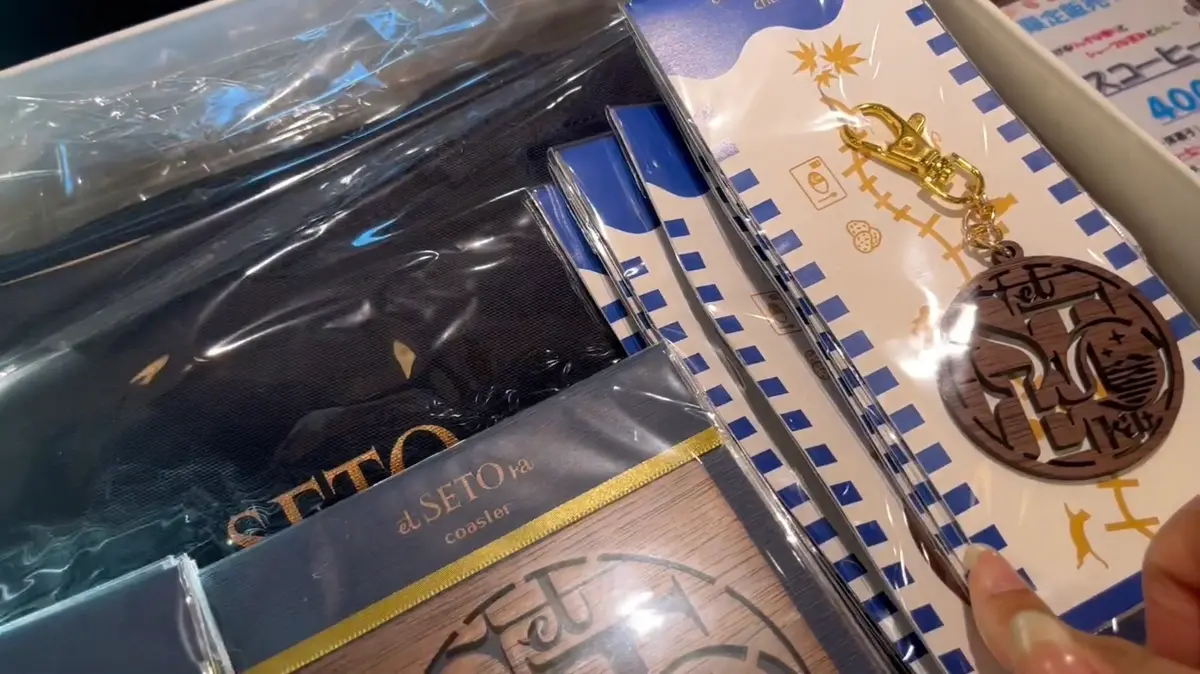
Golden Circle Window
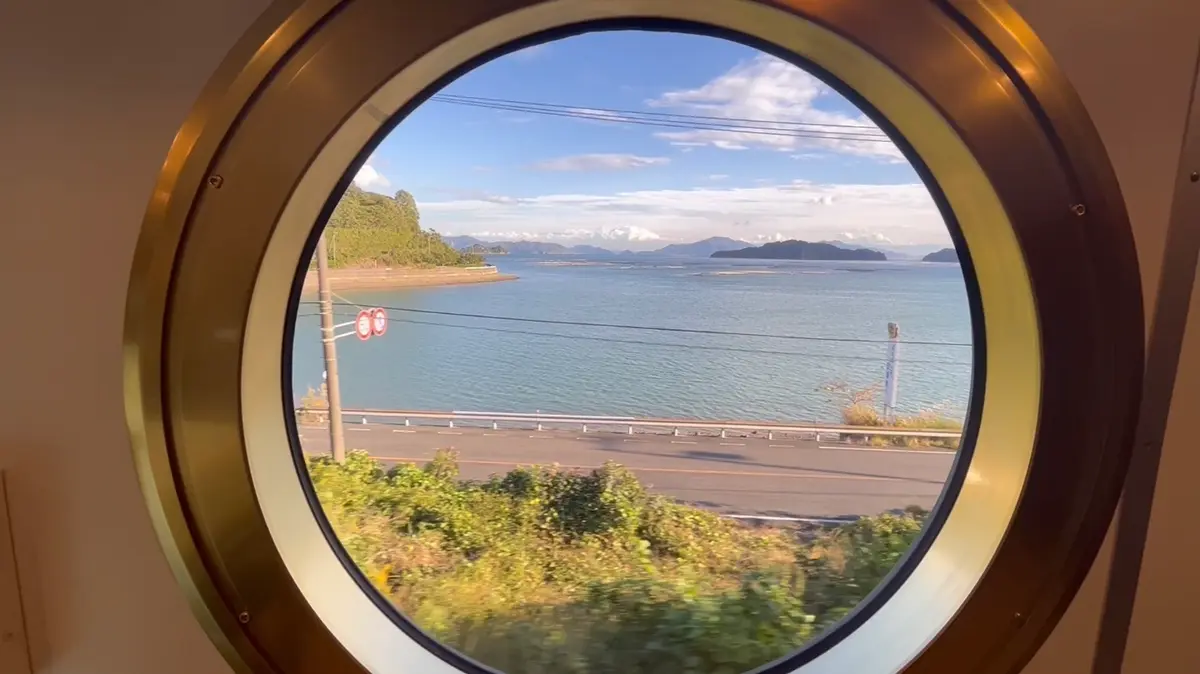
Coco’s favorite seat
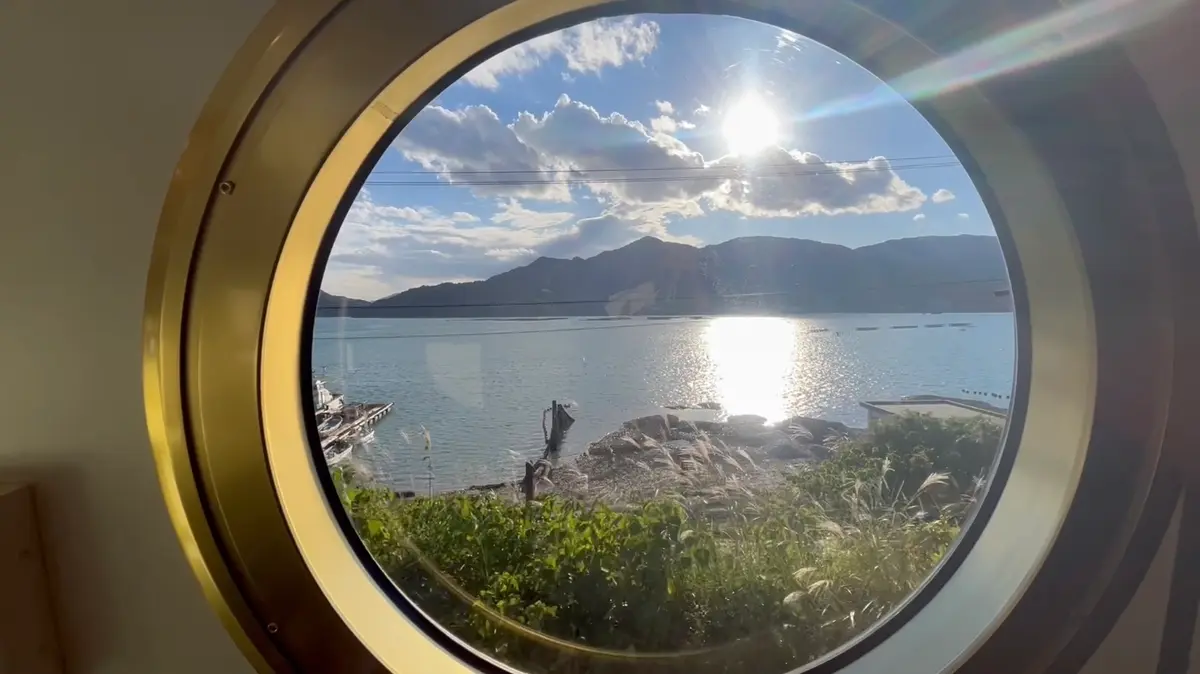
Island spirit lemon cider 270 yen
Buy lemon cider and enjoy it with the beautiful scenery.
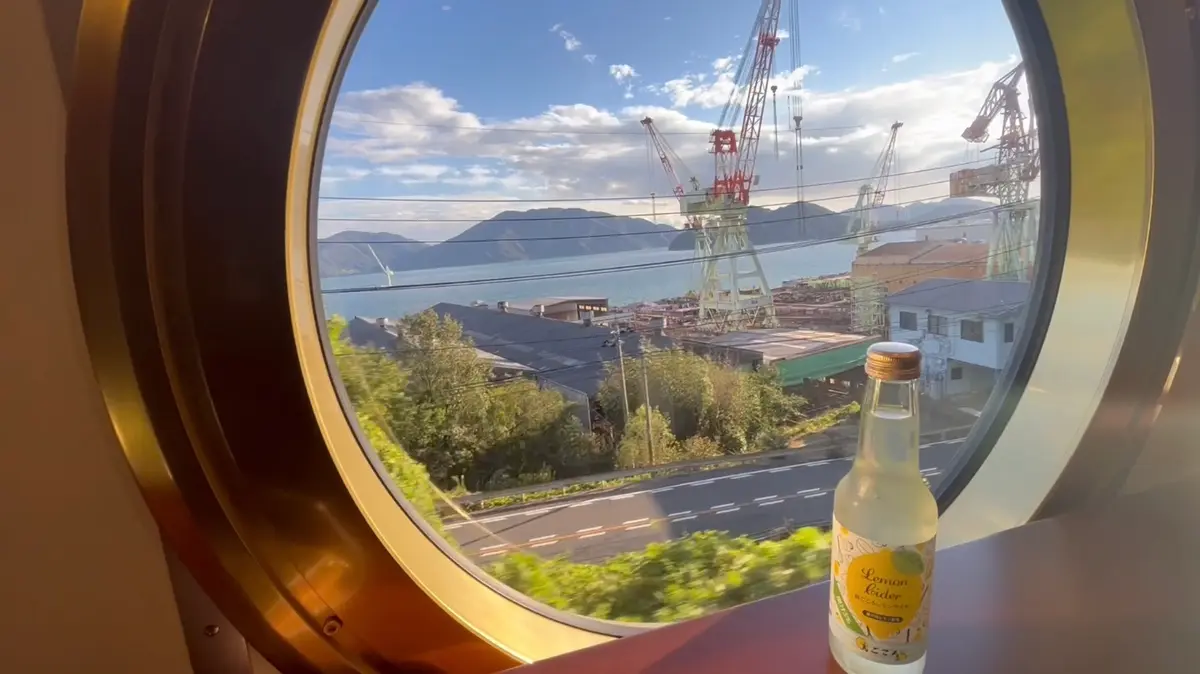
The “etoSETOra” is a temporary rapid train operated by West Japan Railway Company between Hiroshima Station and Onomichi Station via Kure Line and Sanyo Main Line. The exterior of the train has a chic design that evokes the peaceful scenery of Setouchi, inspired by the “blue” of the Seto Inland Sea and the “white” of the waves seen from the coastline.
Kure Station(呉駅)
We arrived at Kure Station!
It was a pleasant et cetera trip ✨
Kure Station, located in Takaracho, Kure City, Hiroshima Prefecture, is a station on the Kure Line of the West Japan Railway Company (JR West). It is the central station of Kure City, and the station building, which opened in 1981, houses the commercial facility “CREST “. The station is also known for the change of the train approach melody to the theme song of “Space Battleship Yamato,” the masterpiece of cartoonist Leiji Matsumoto, in 2013.
Kure Chuo Pier Terminal(呉中央桟橋ターミナル)
We walked from Kure Station to the terminal.Purchase tickets at least 20 minutes before the ship departs!
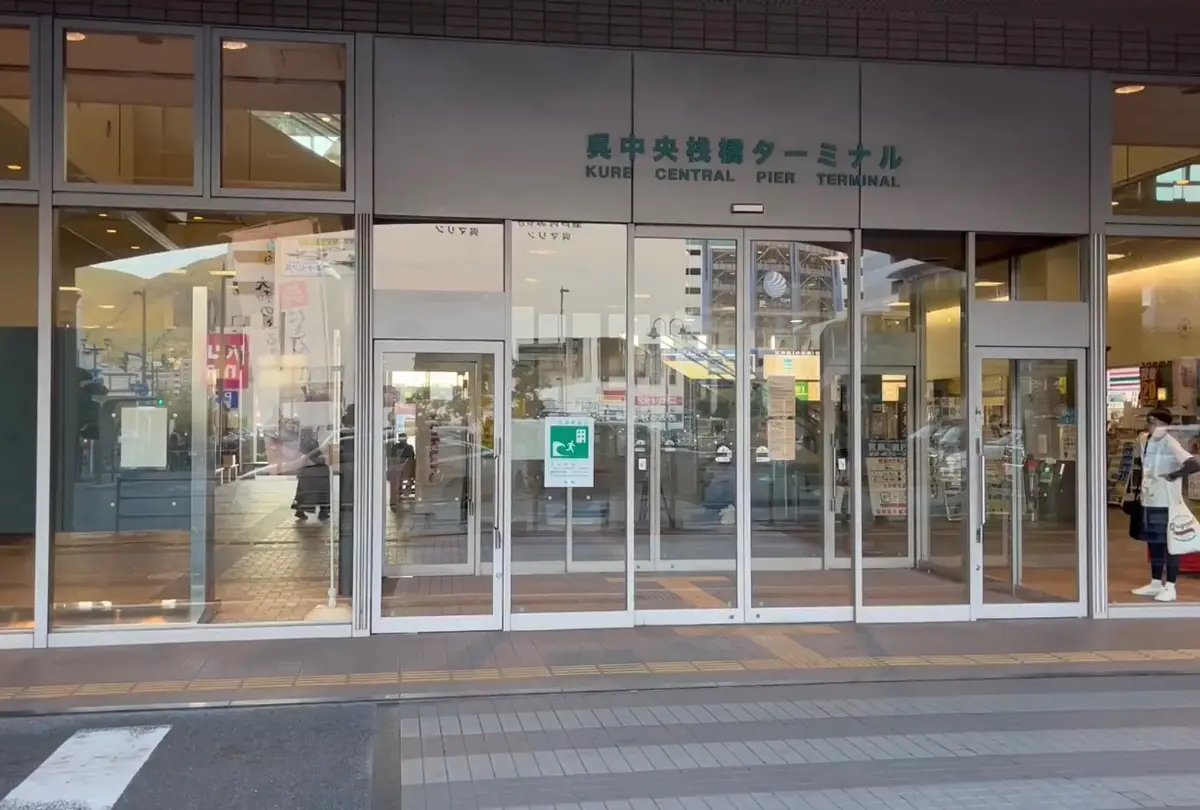
Kure Chuo Pier Terminal, located in Kure City, Hiroshima Prefecture, is a terminal for ferries and high-speed boats to Hiroshima, Matsuyama, and Etajima. The symbolic dome with a bronze roof and brick-like exterior walls are impressive, matching the city of Kure. It is a 10-minute walk from Kure Station on the JR Kure Line.
Kure Kansen Meguri(呉艦船めぐり)
I was looking forward to joining the “Yuh Kure Cruise”! This is a cruise where the departure time changes with the time of sunset.It was very interesting to see the descent of the self-defense flag and other scenes!
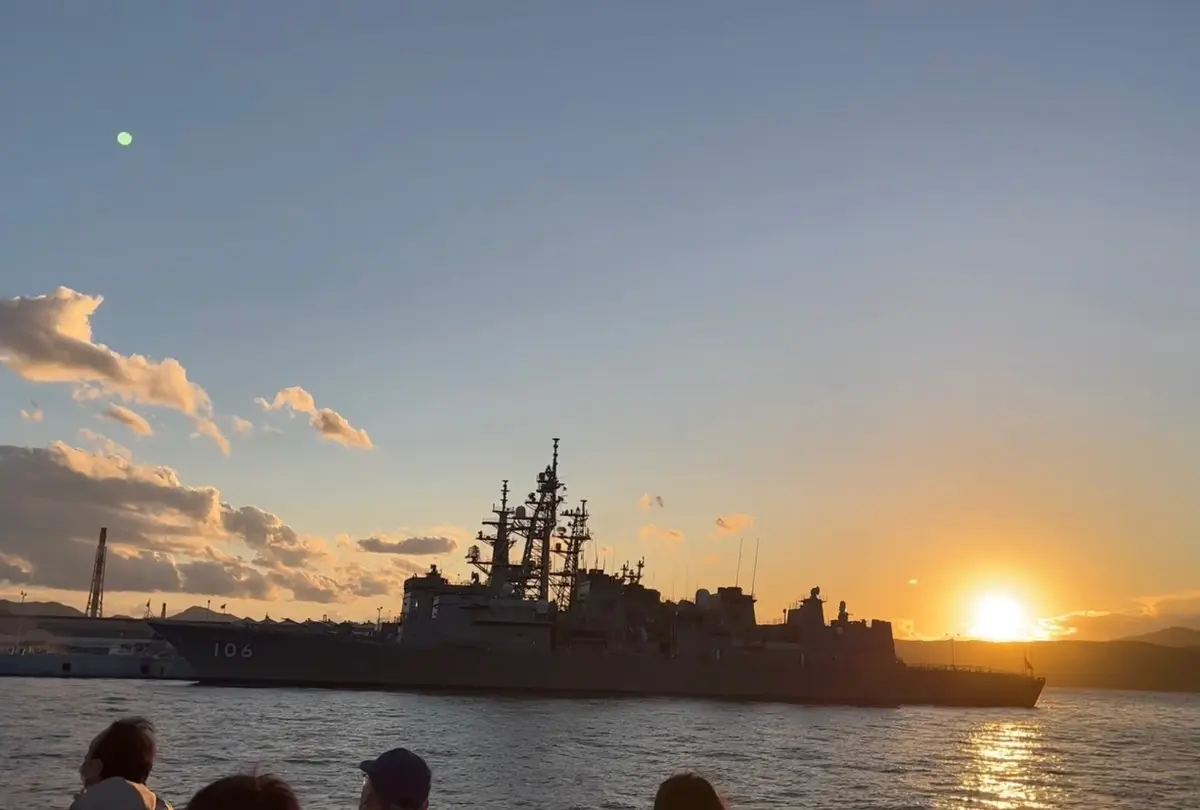
(inside a) terminal
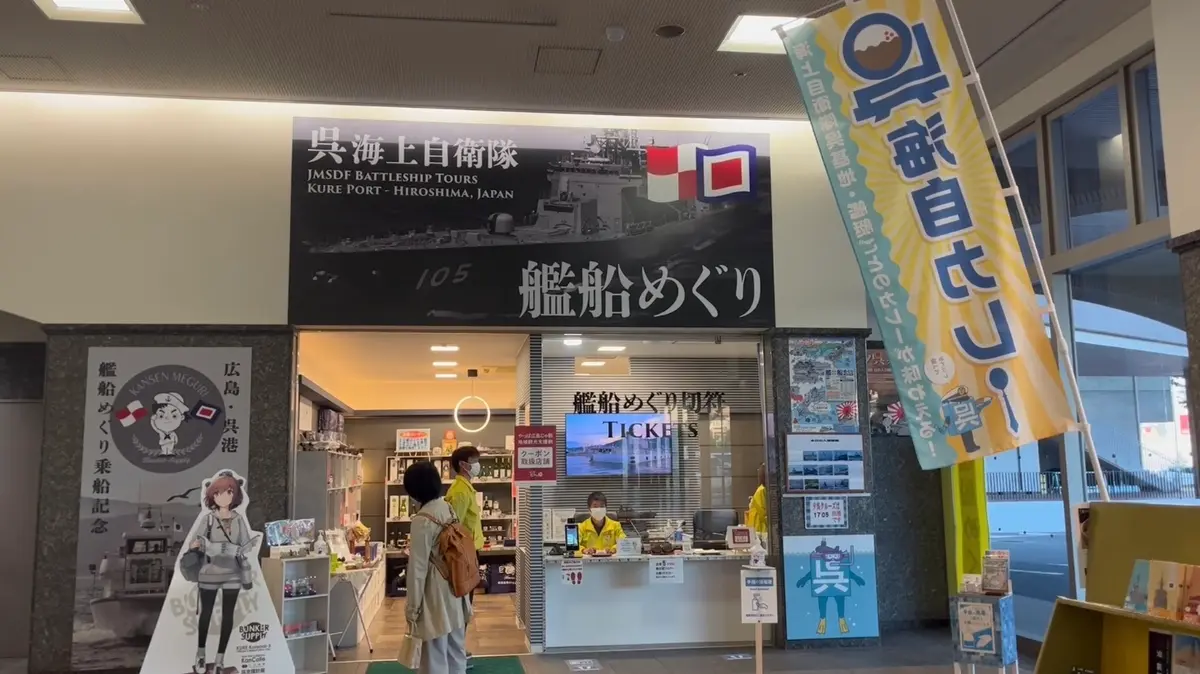
Second Floor Seating
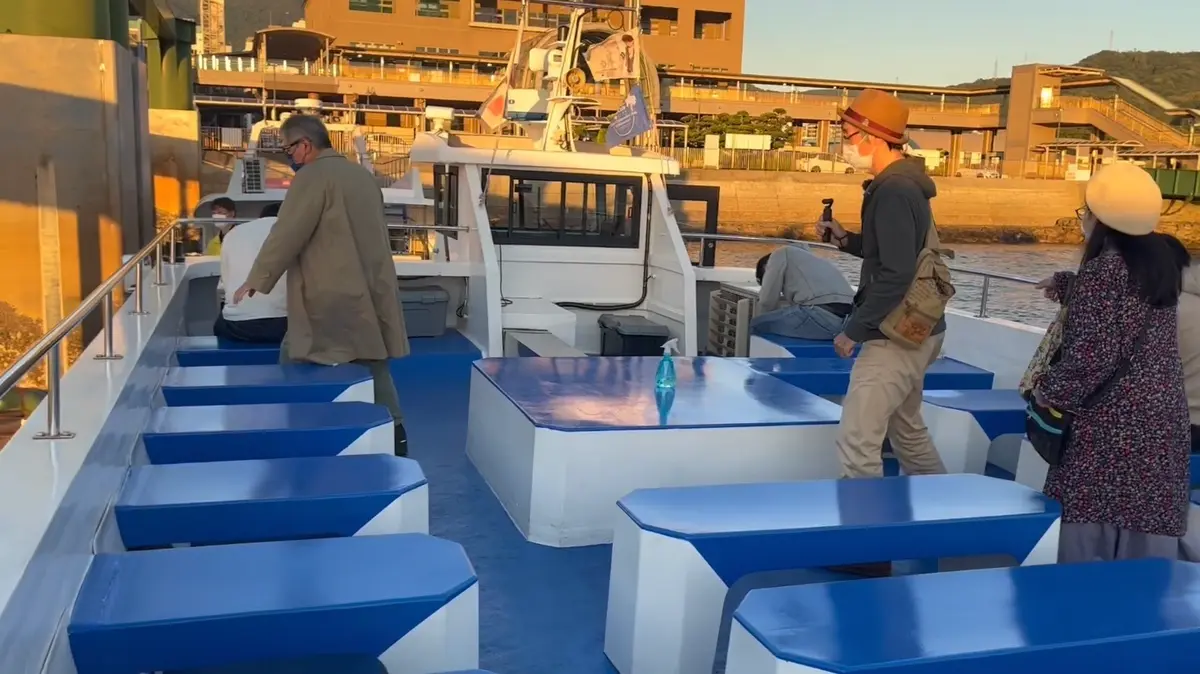
Ship Description
The brother explained the boat to me, and even as a beginner, I really enjoyed it.
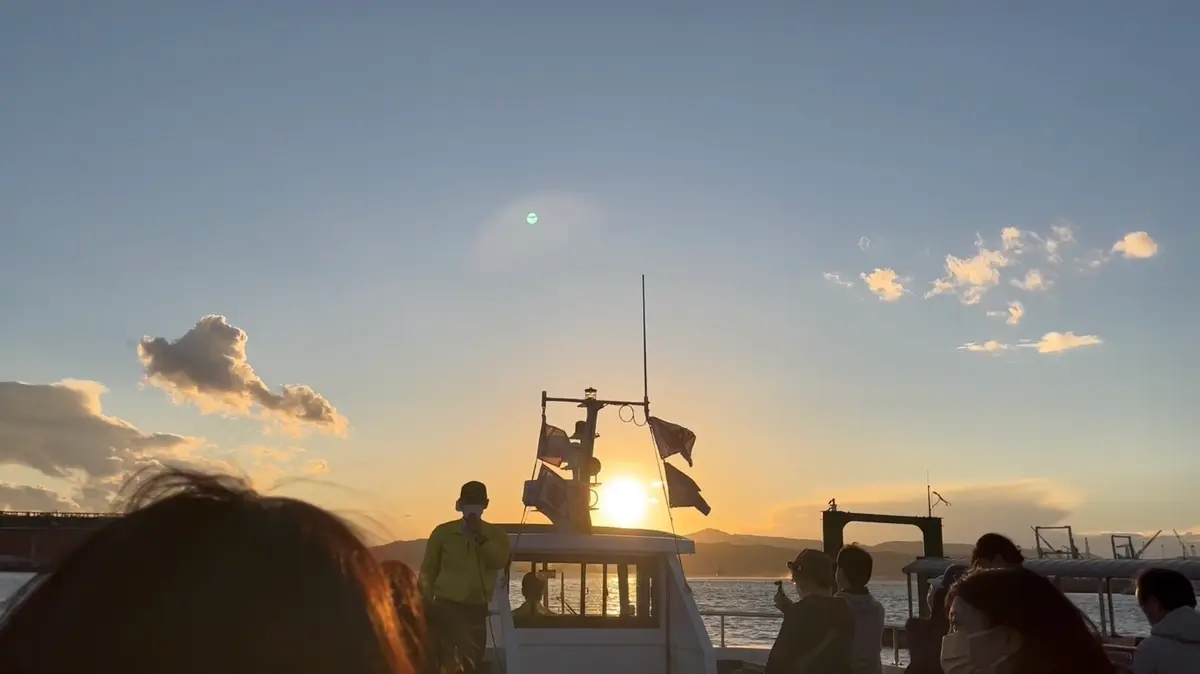
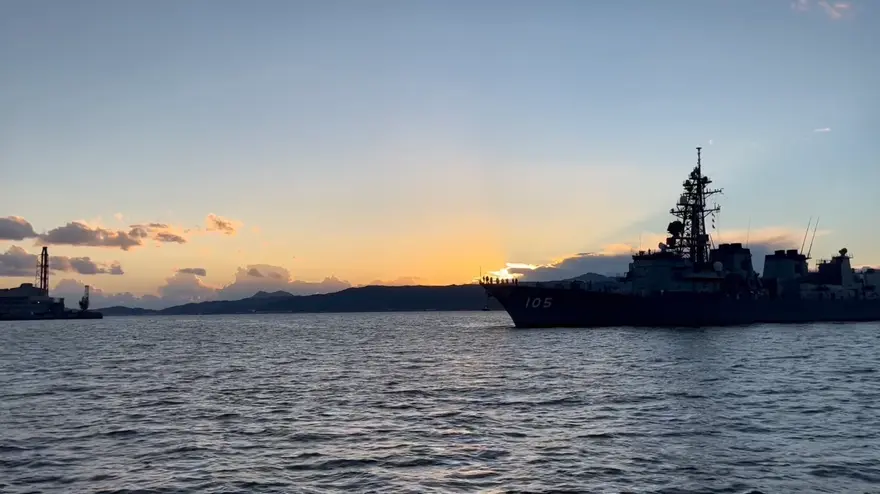
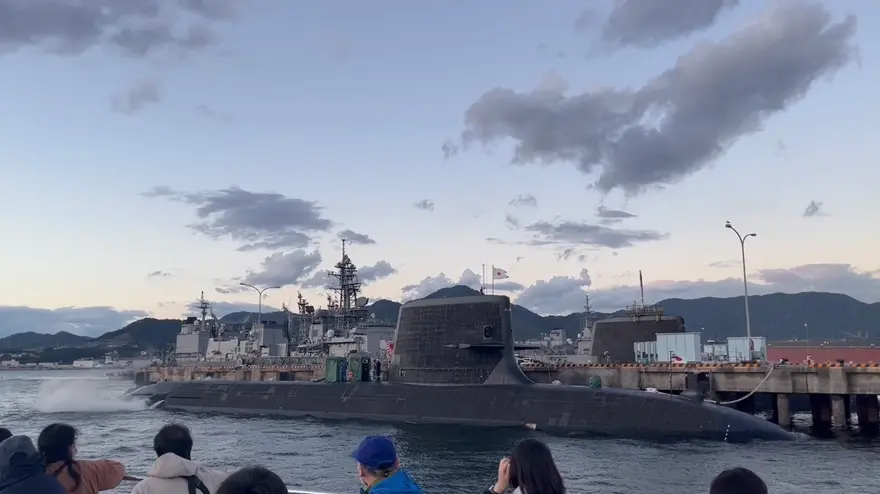
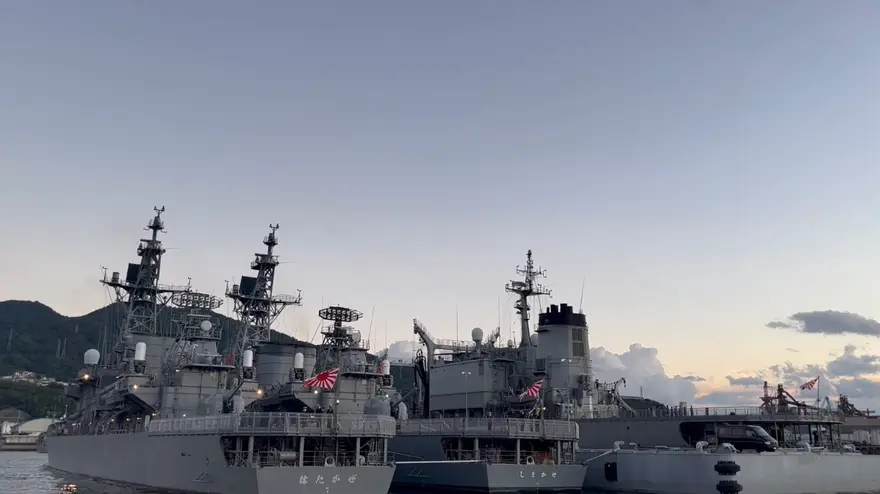
The “Kure Kansen Meguri” is located near the Kure Air Base of the Maritime Self-Defense Force, and offers a cruise ship ride to see submarines and destroyers belonging to the Maritime Self-Defense Force up close and personal. The tour takes about 35 minutes, and you will be guided by an OB of the Maritime Self-Defense Force.
Kure port Observatory(呉みなと展望台)
After the cruise, we went to the observation deck on the fifth floor of the building where we bought our tickets. The lights of the harbor and the starry sky were truly beautiful, and the trip was fulfilling to the end!
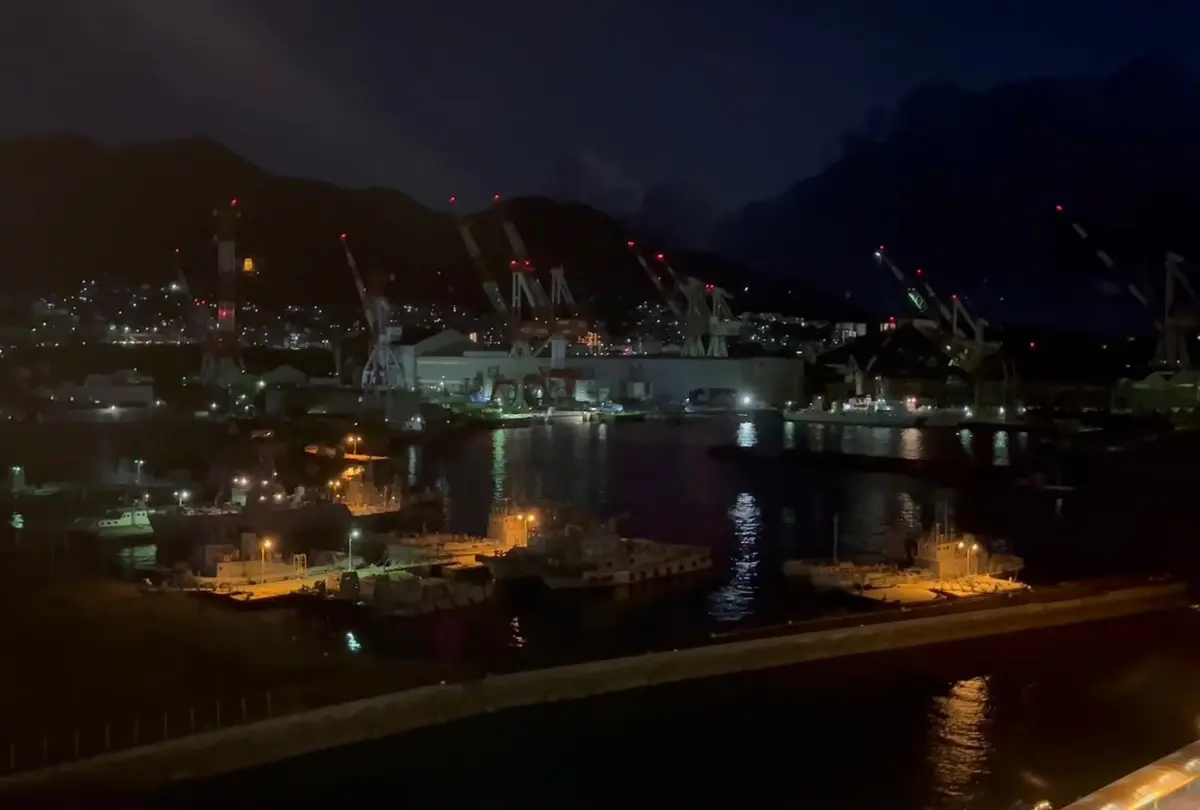
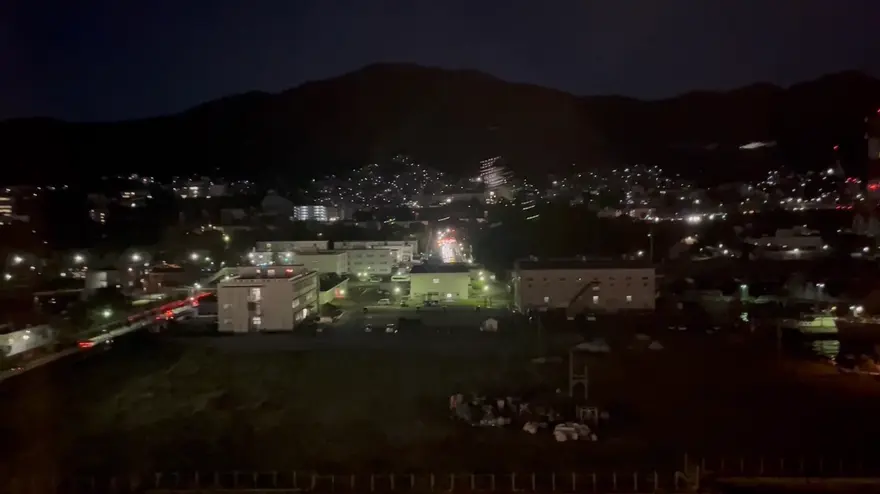
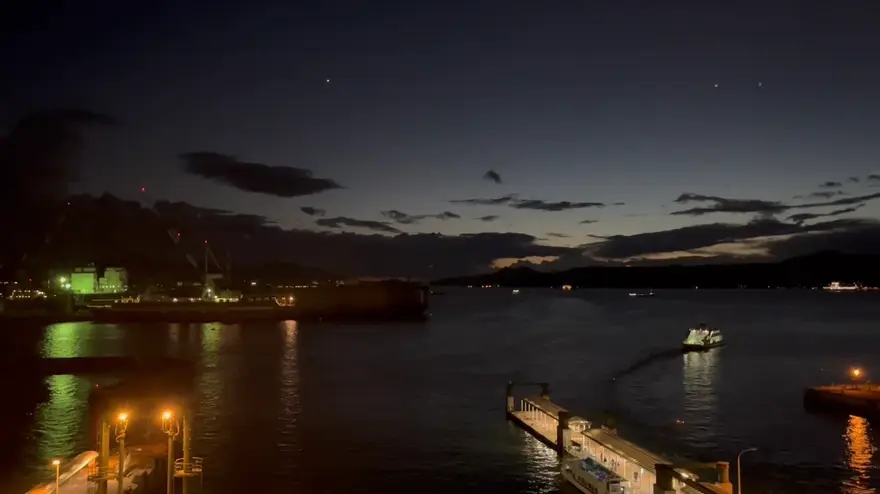
Located on the fifth floor of the Kure Central Pier Terminal in Kure City, Hiroshima Prefecture, the Kure port Observation Deck offers a 360-degree view of Kure’s harbor.

